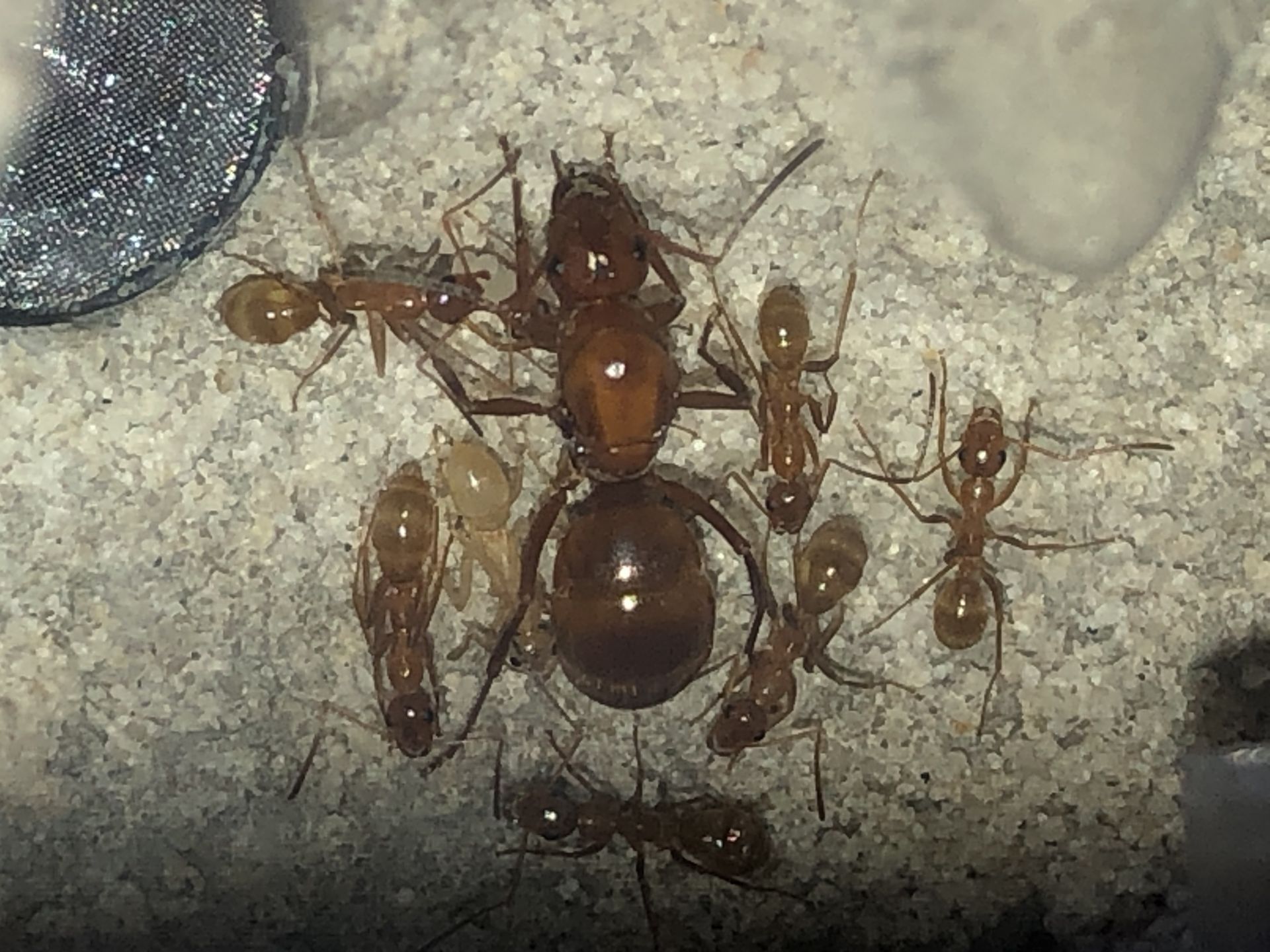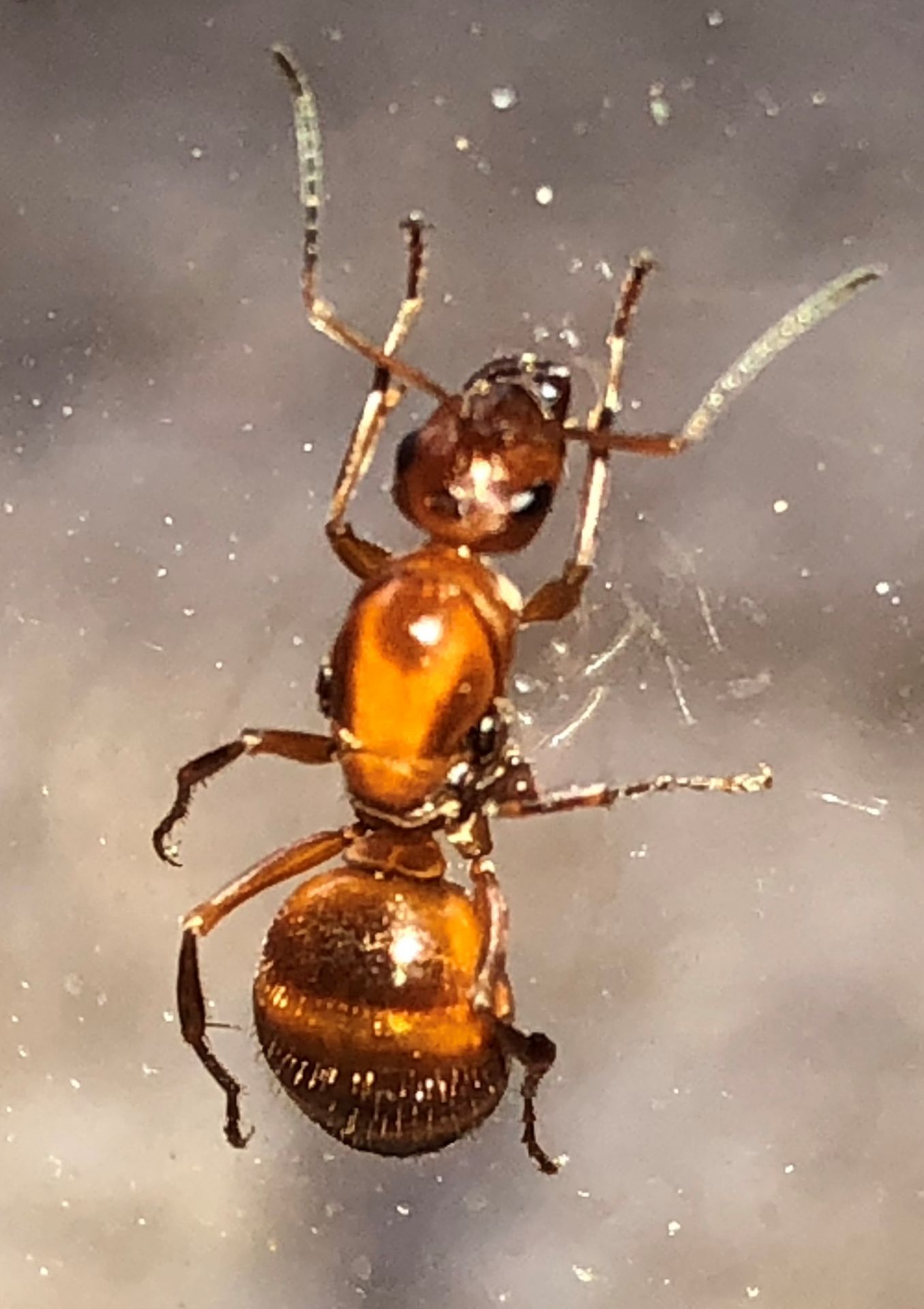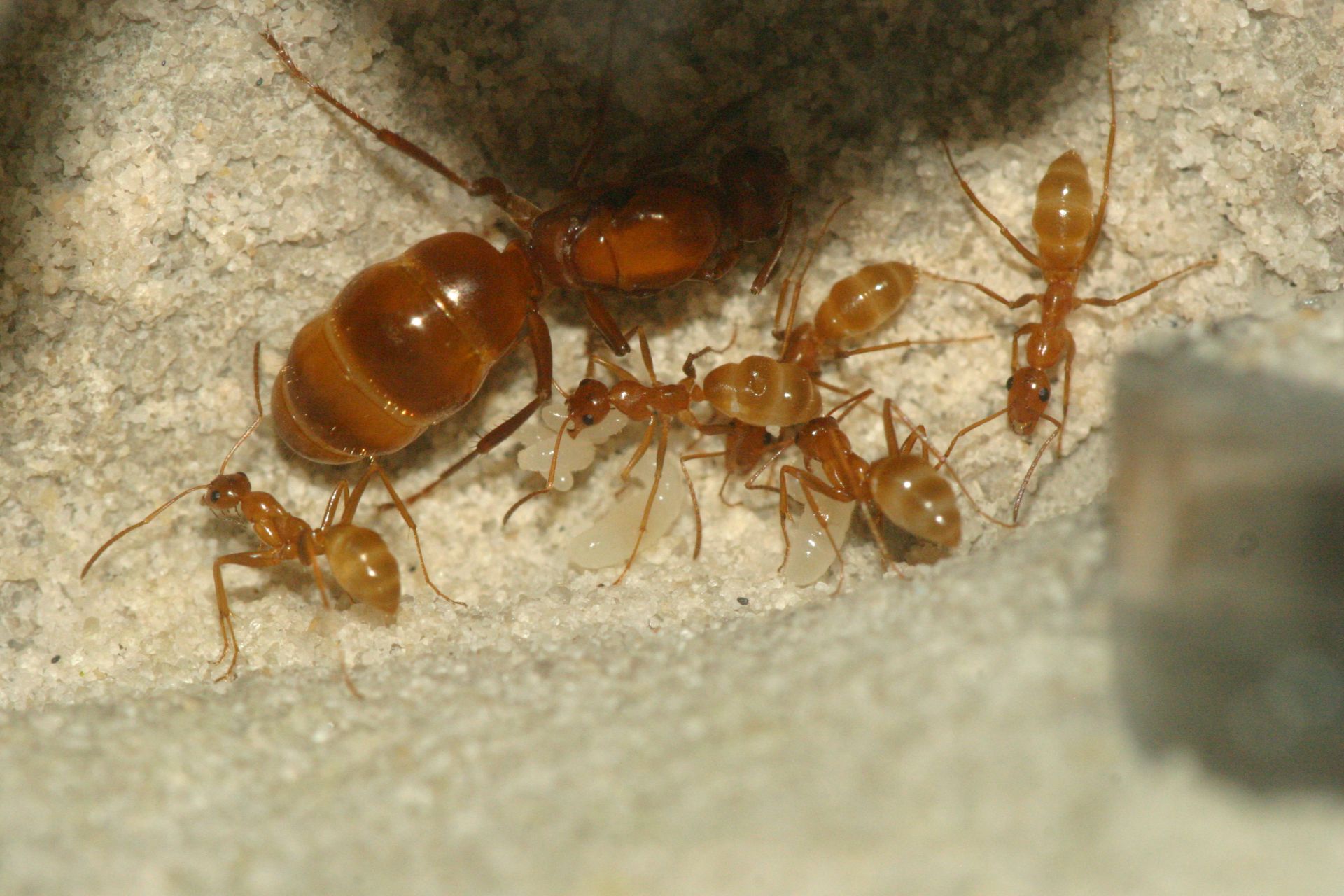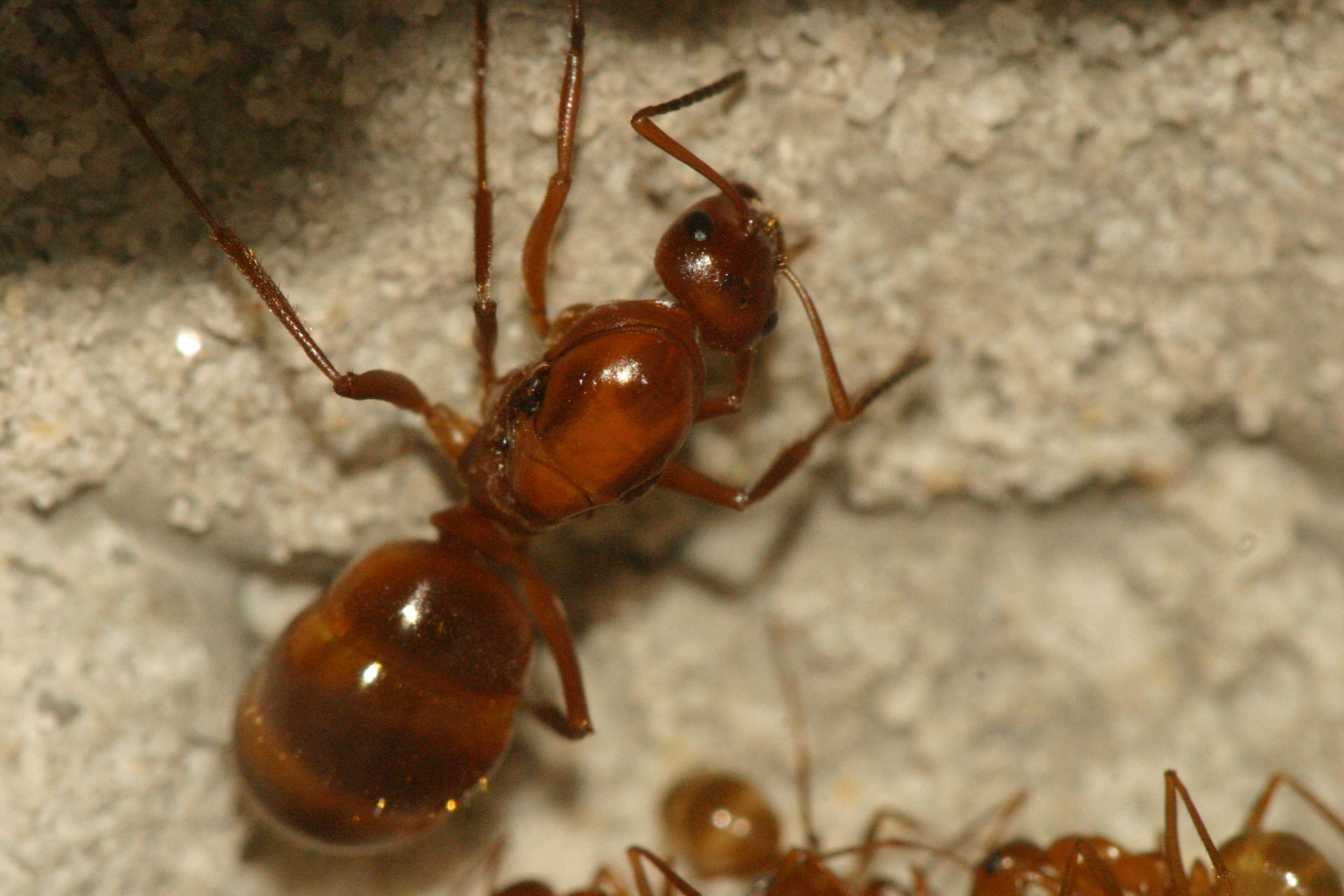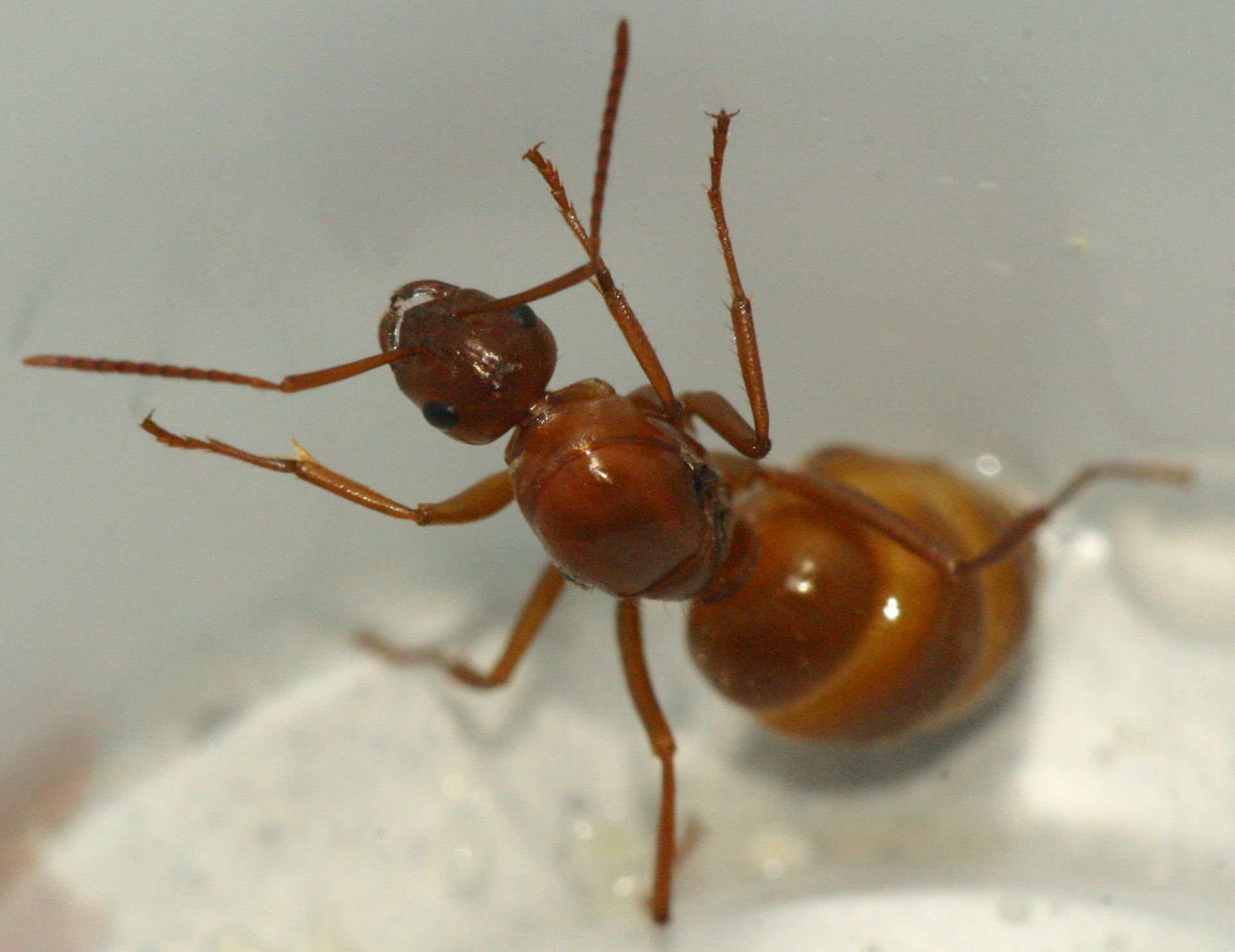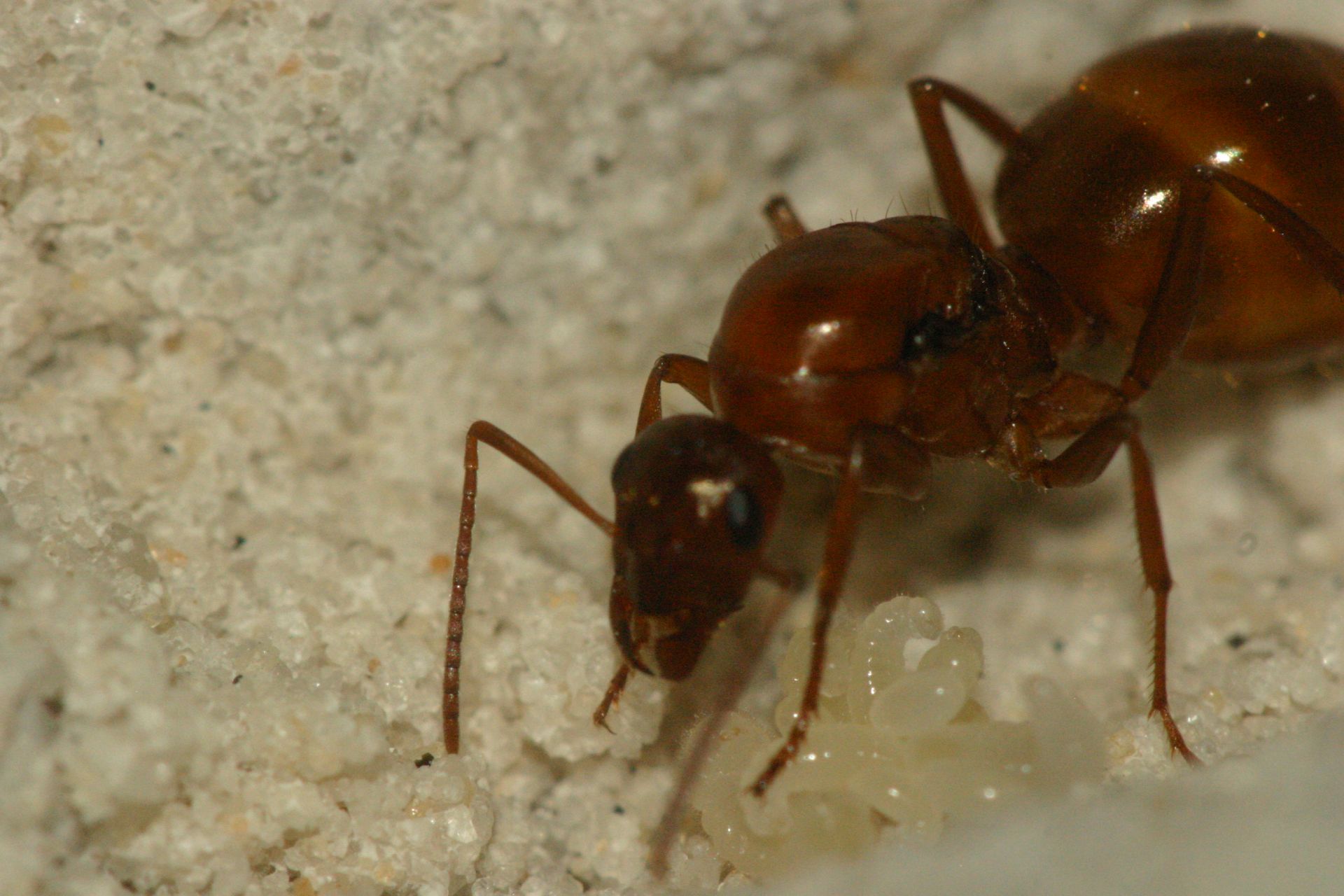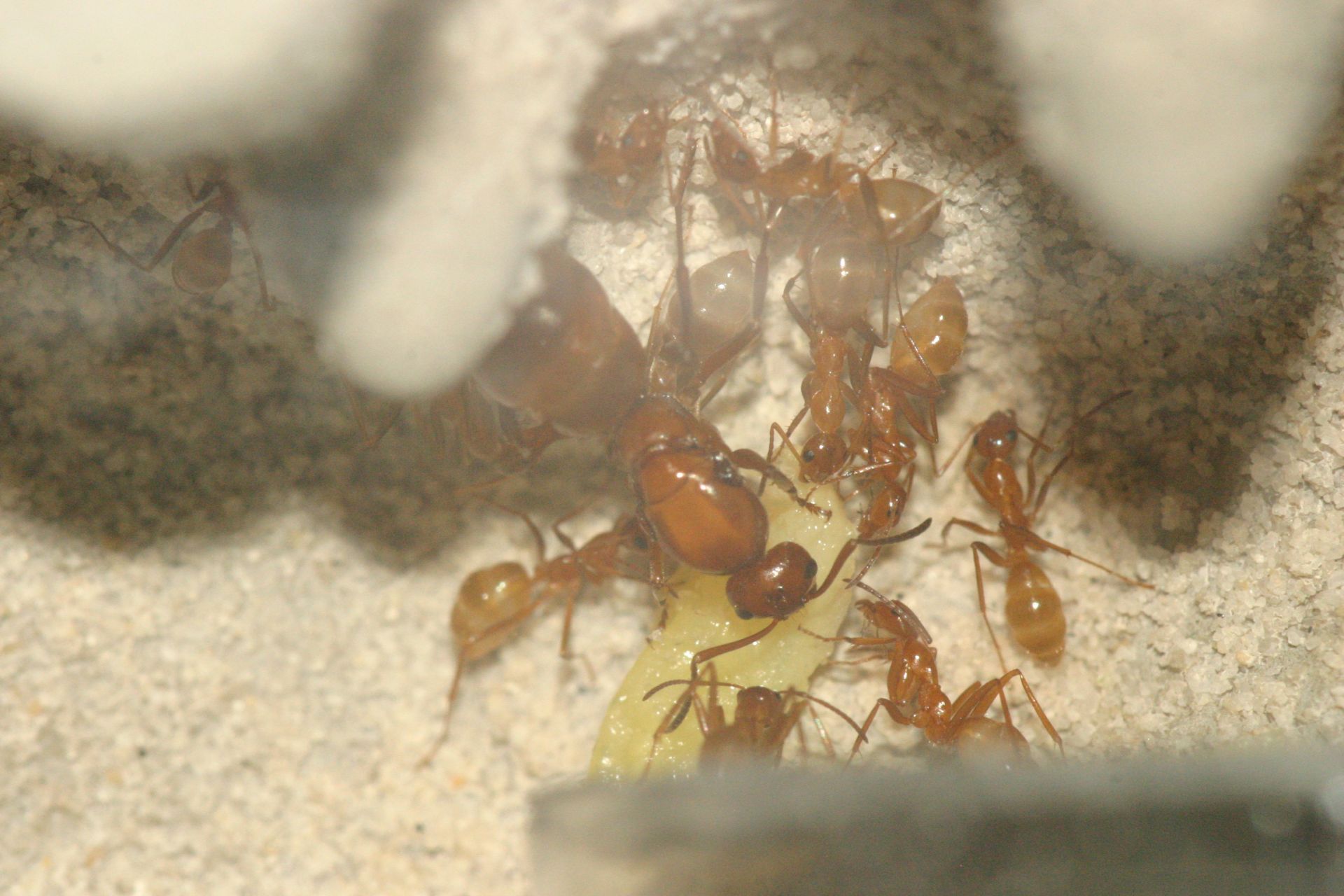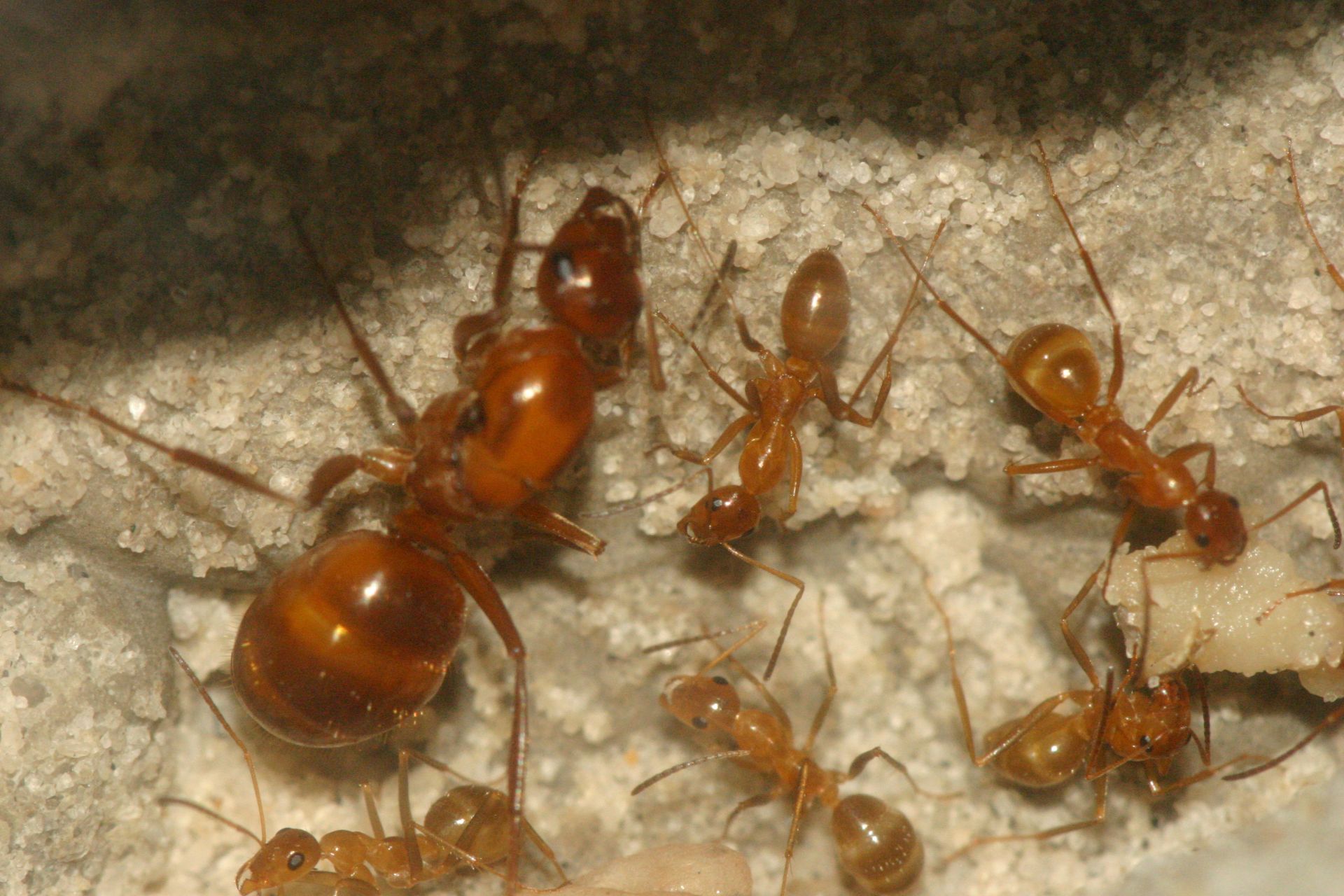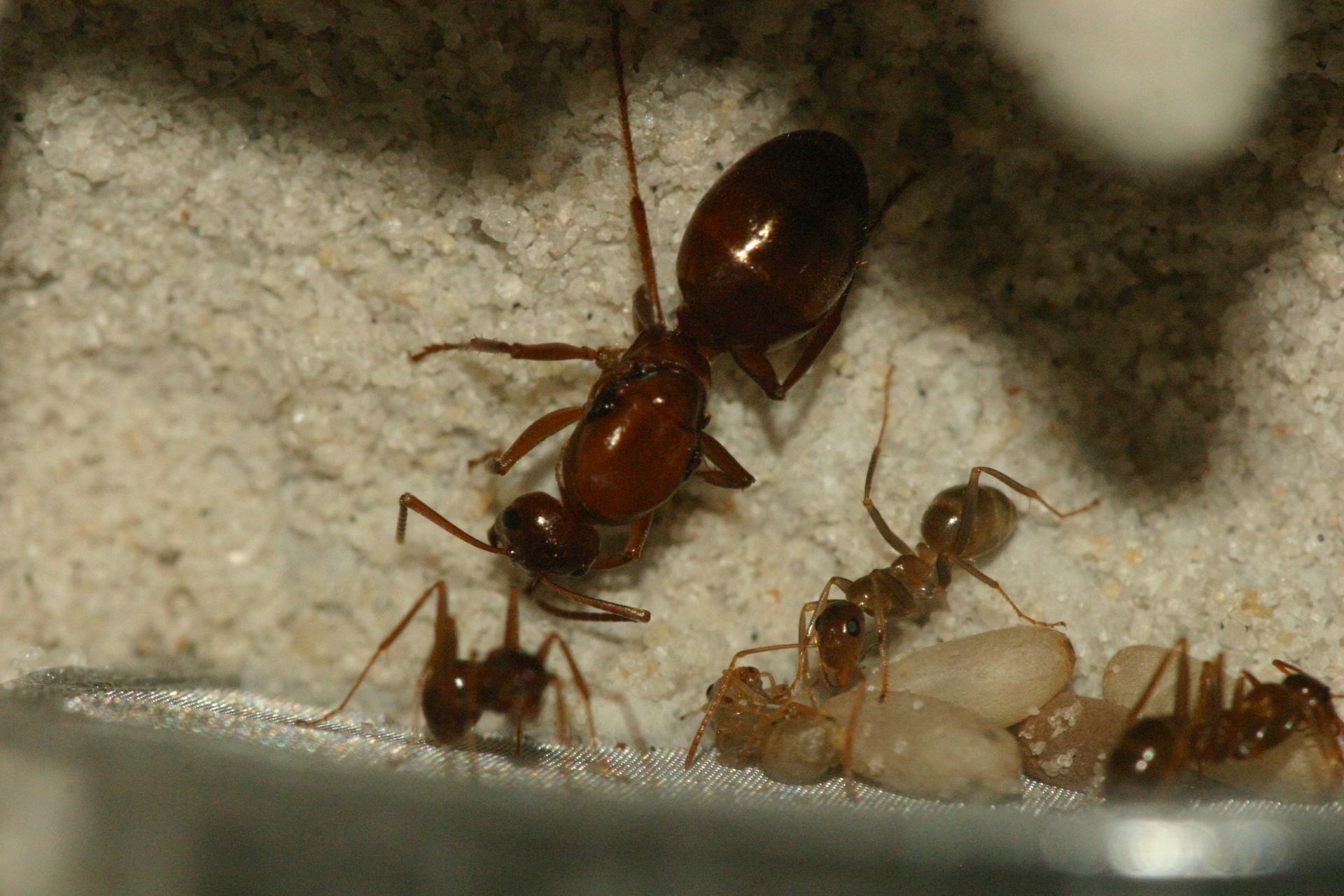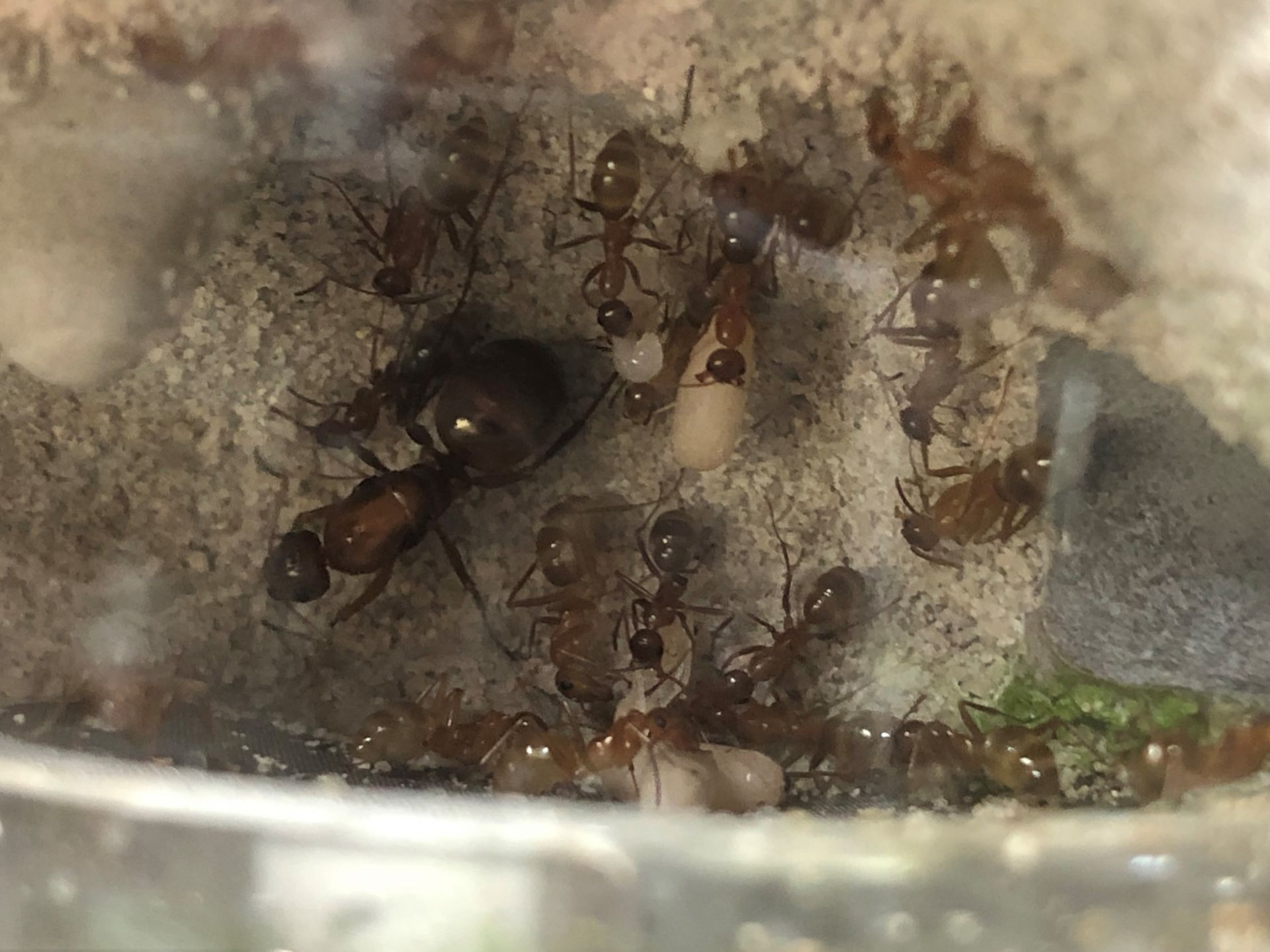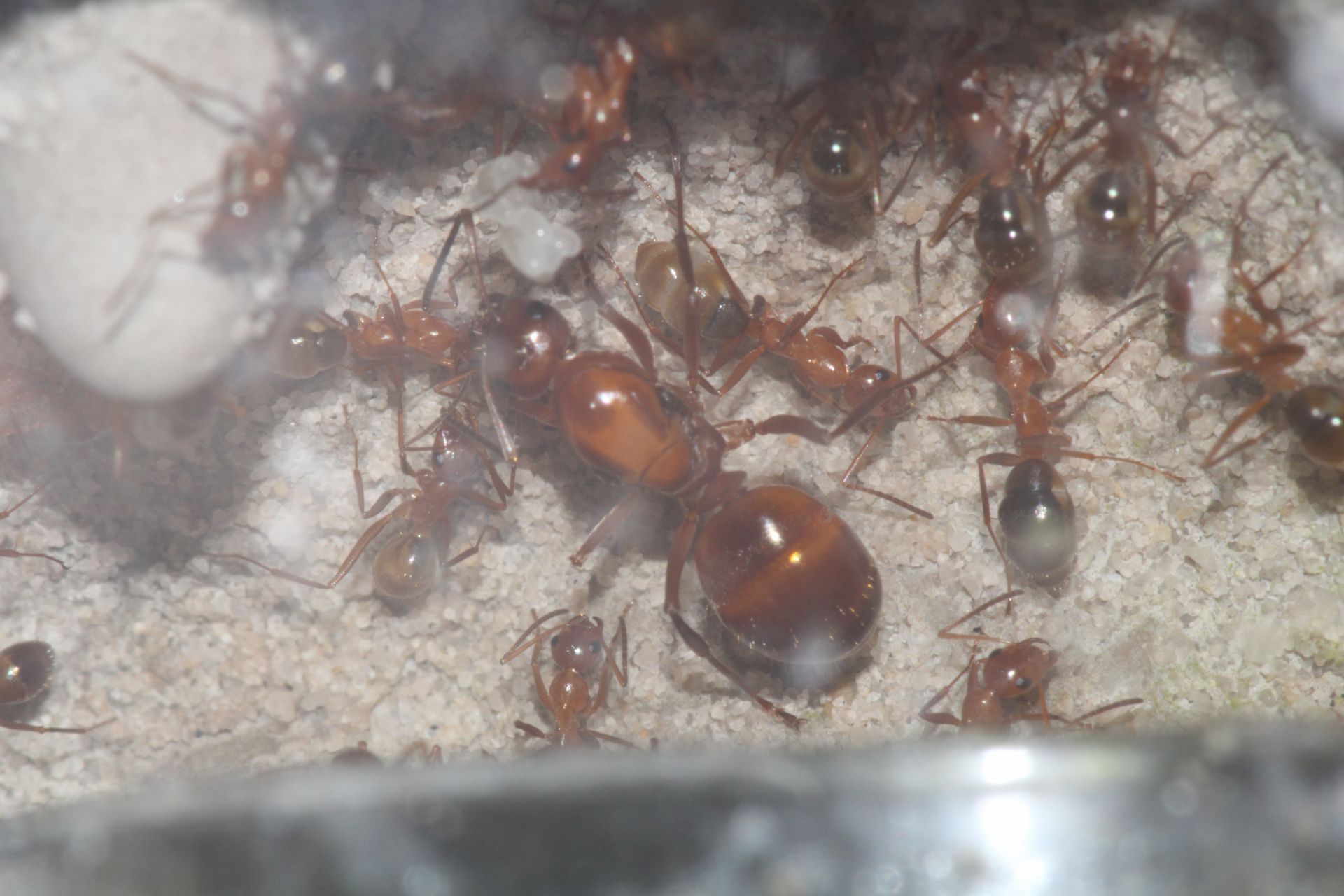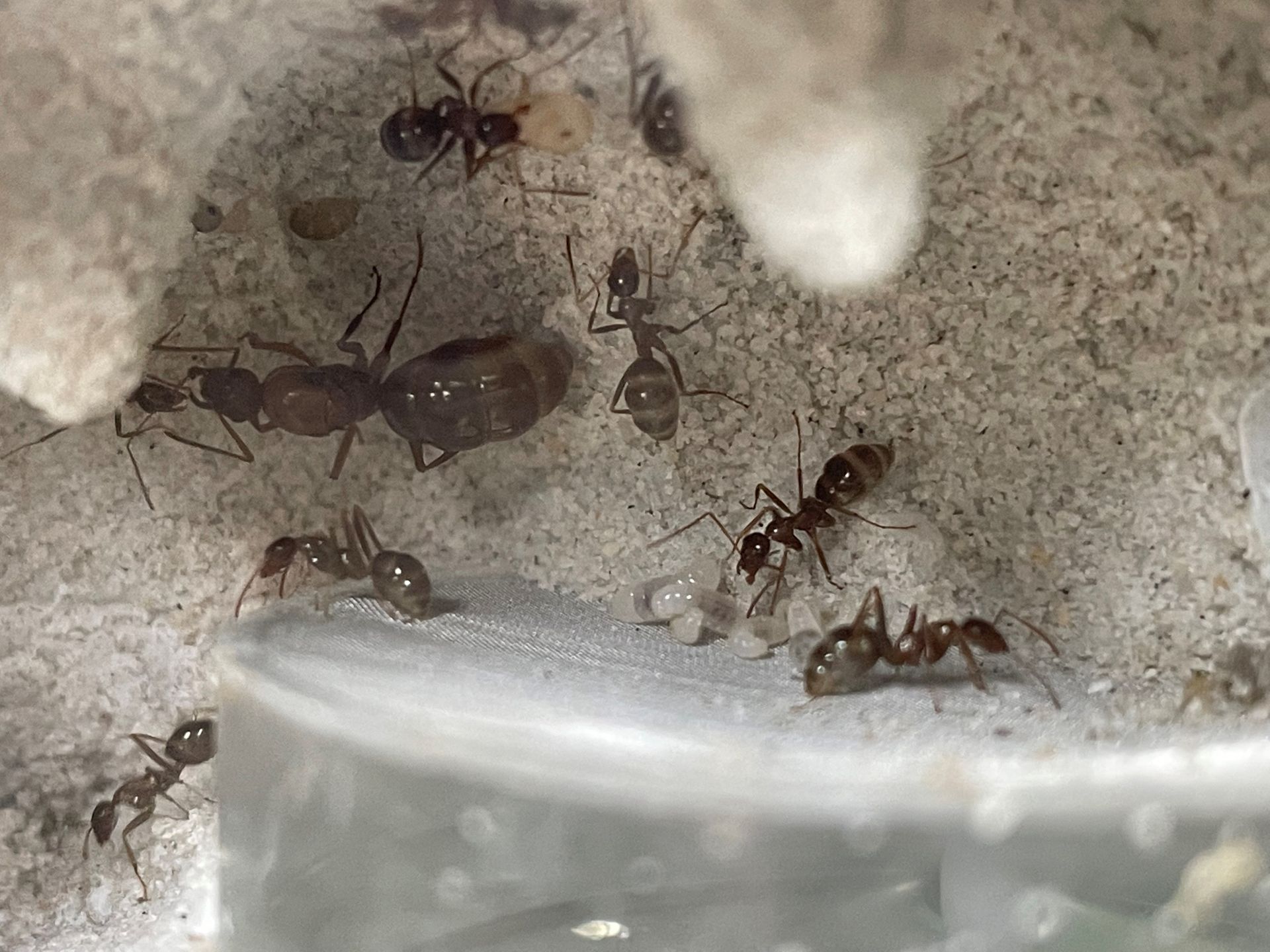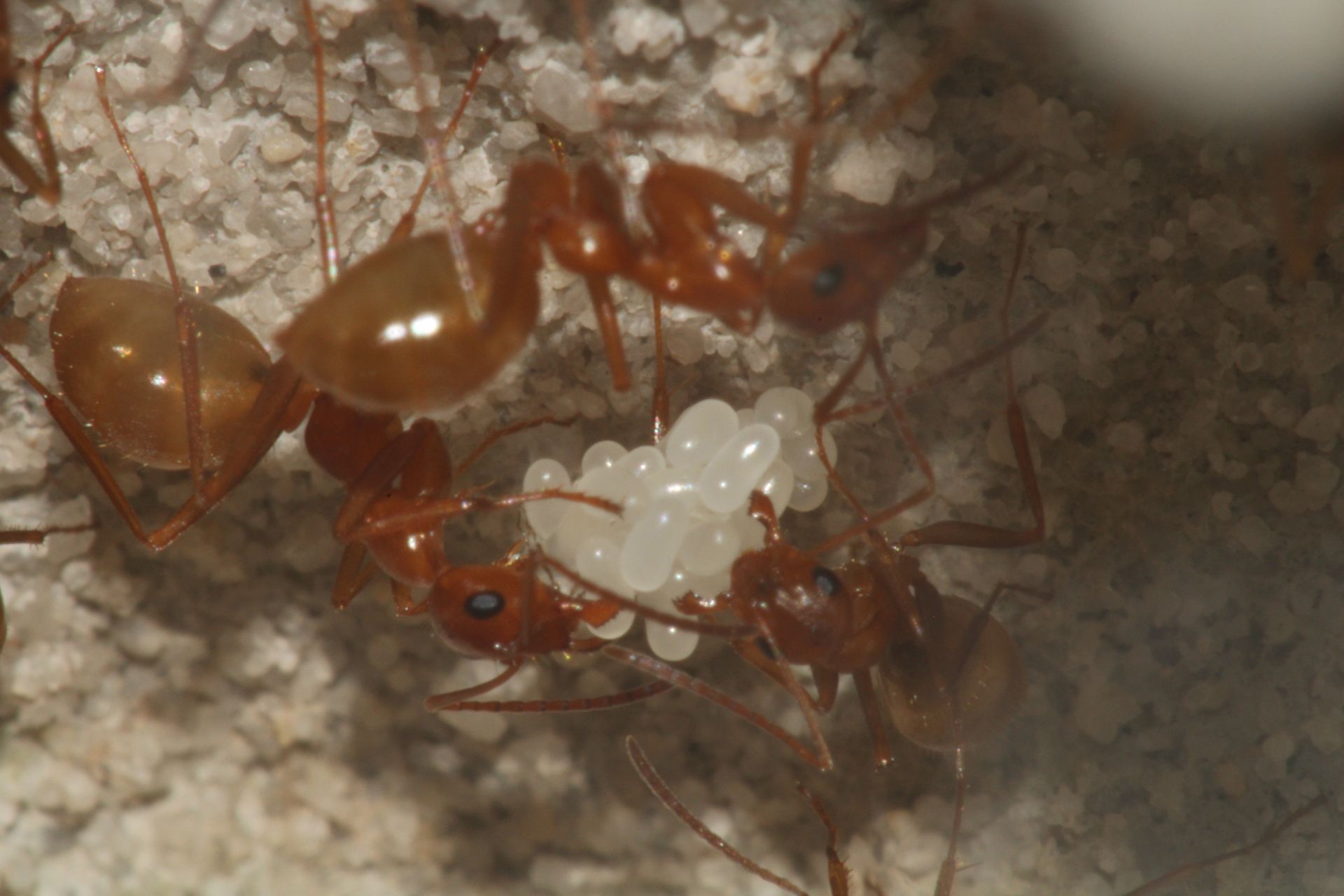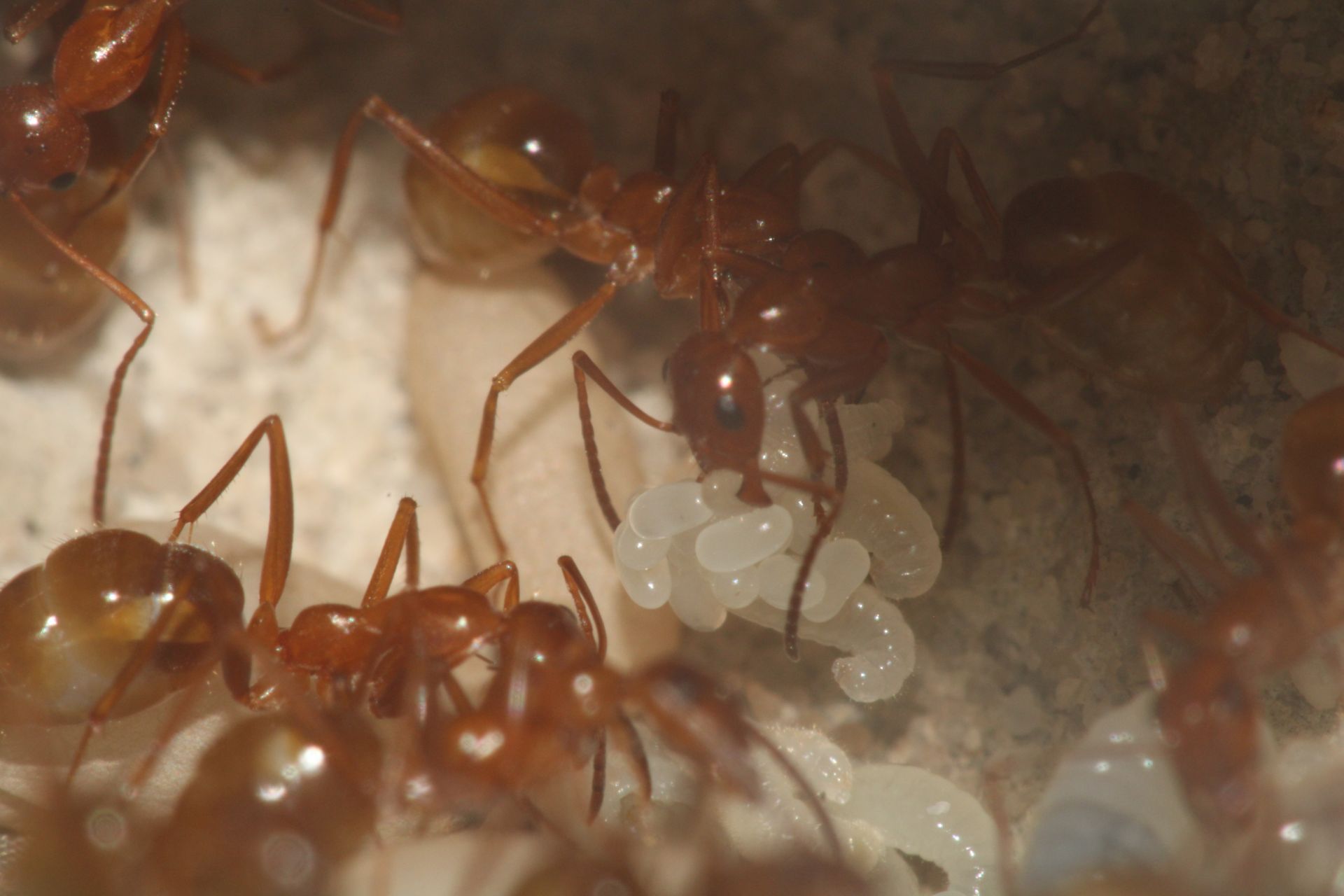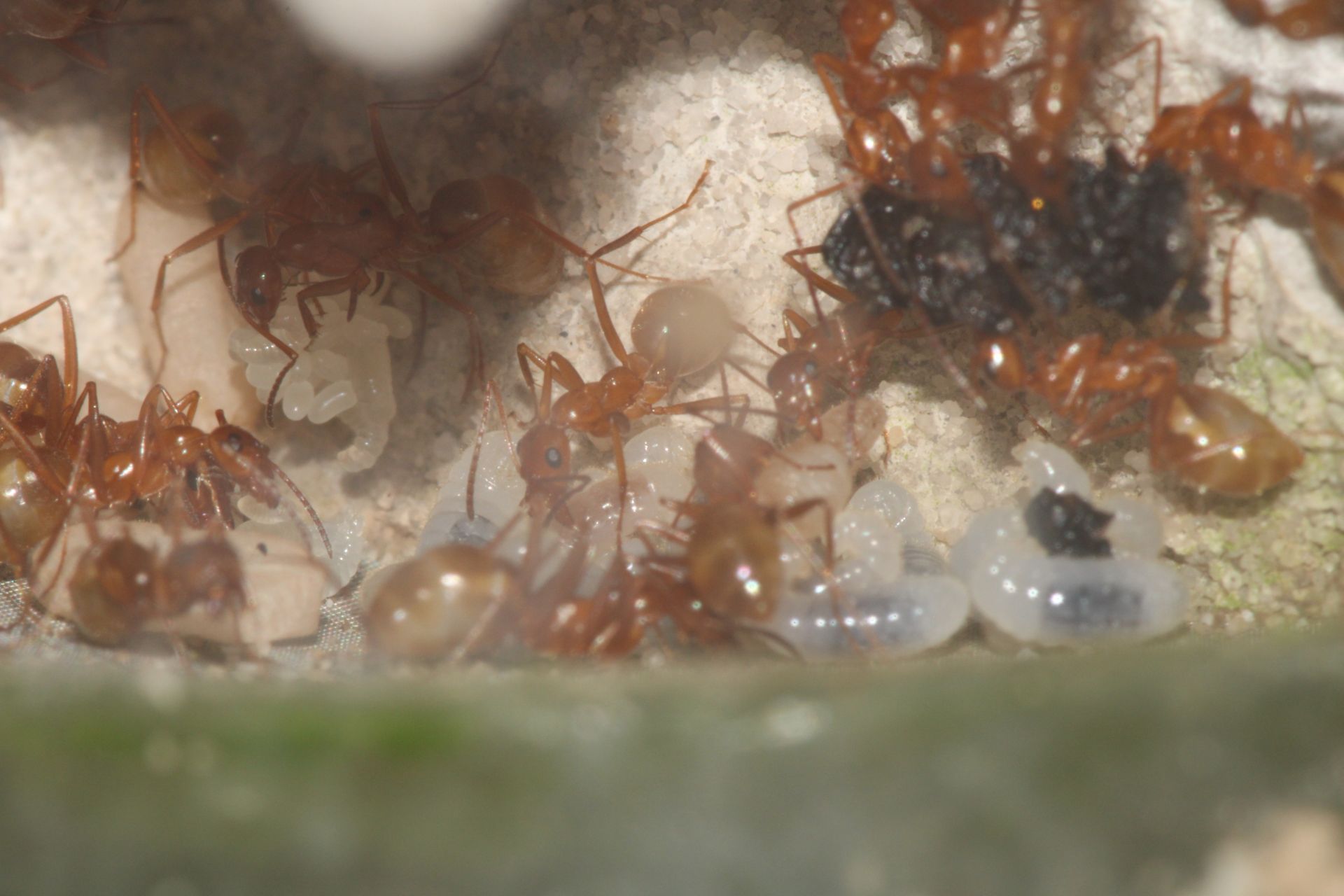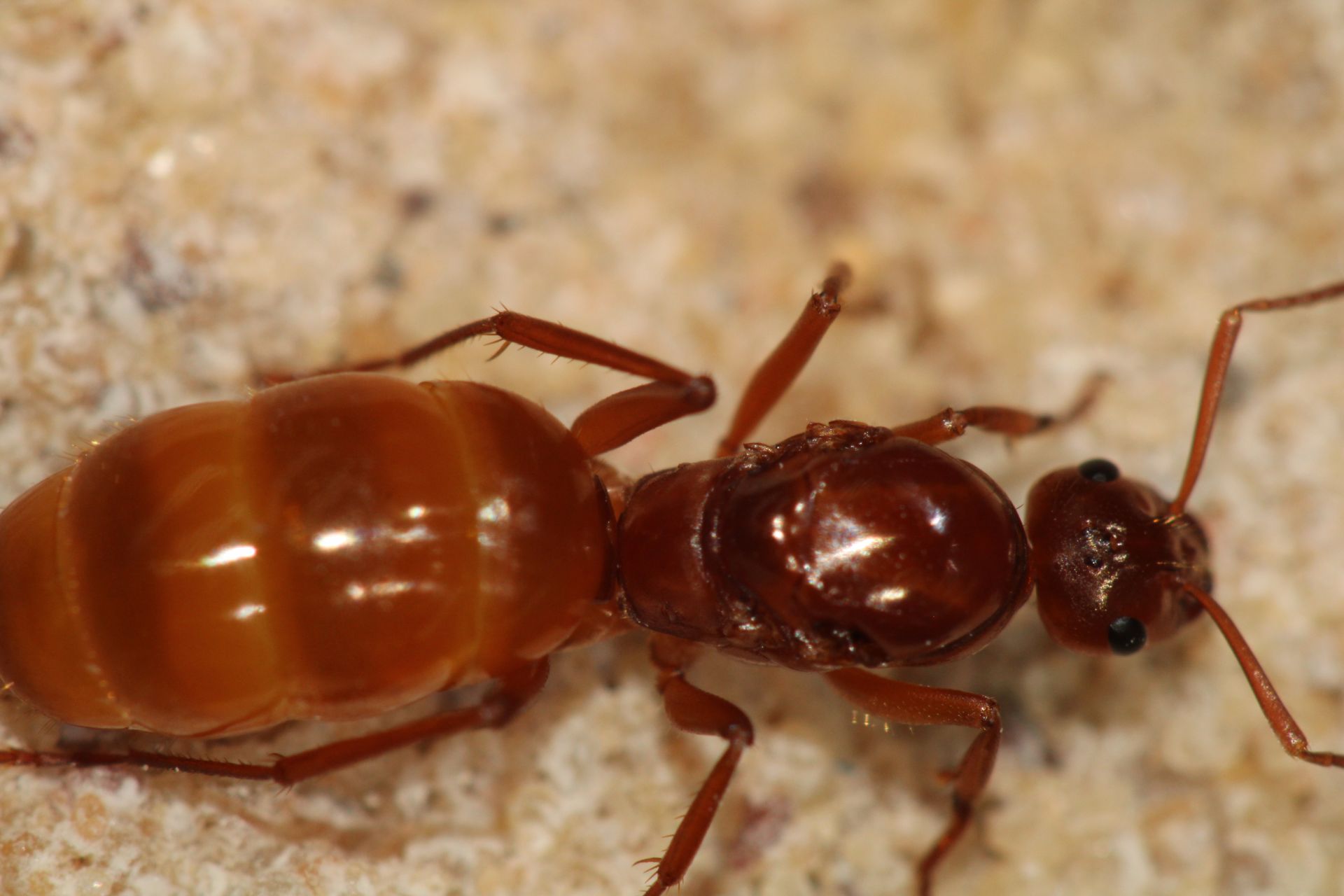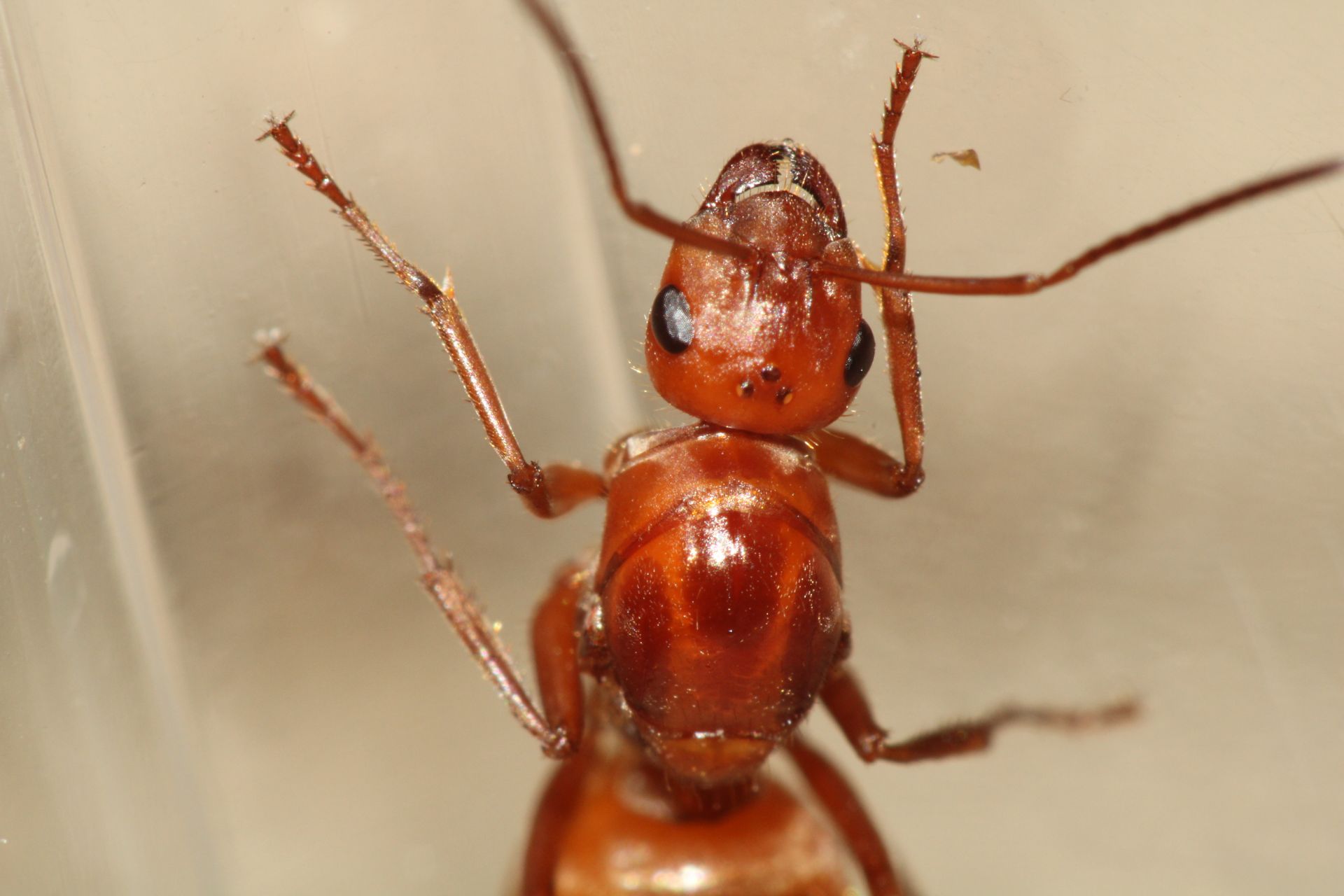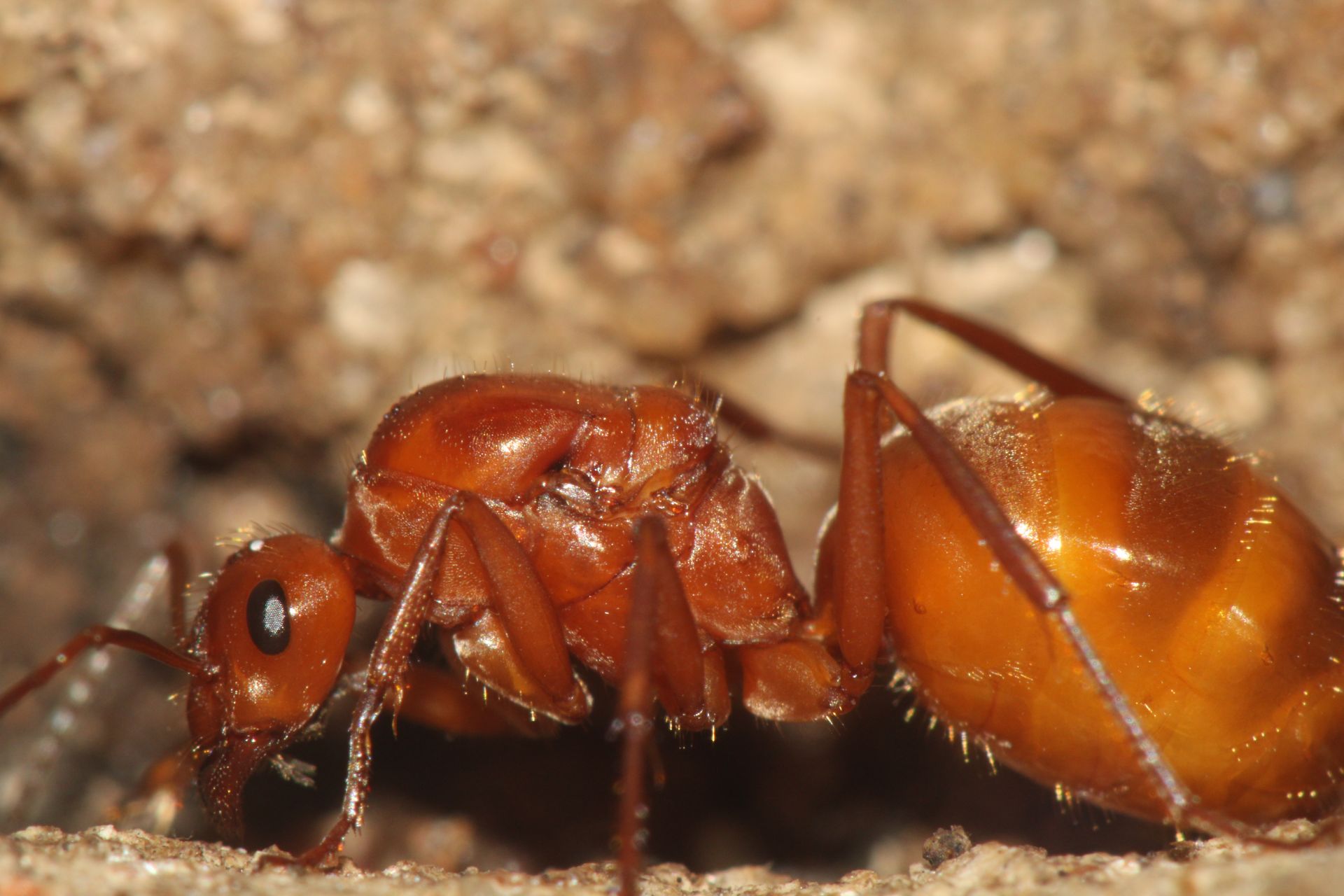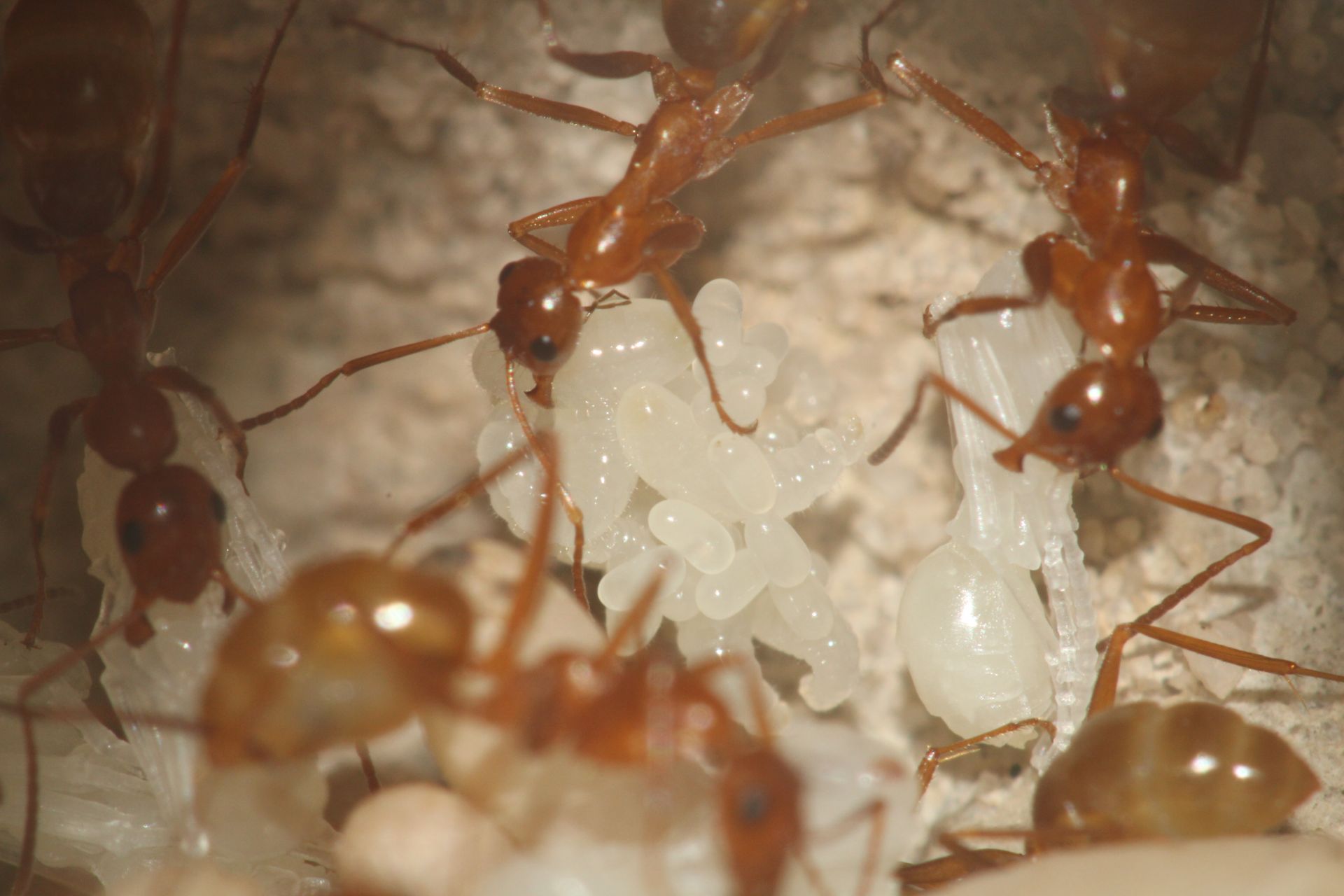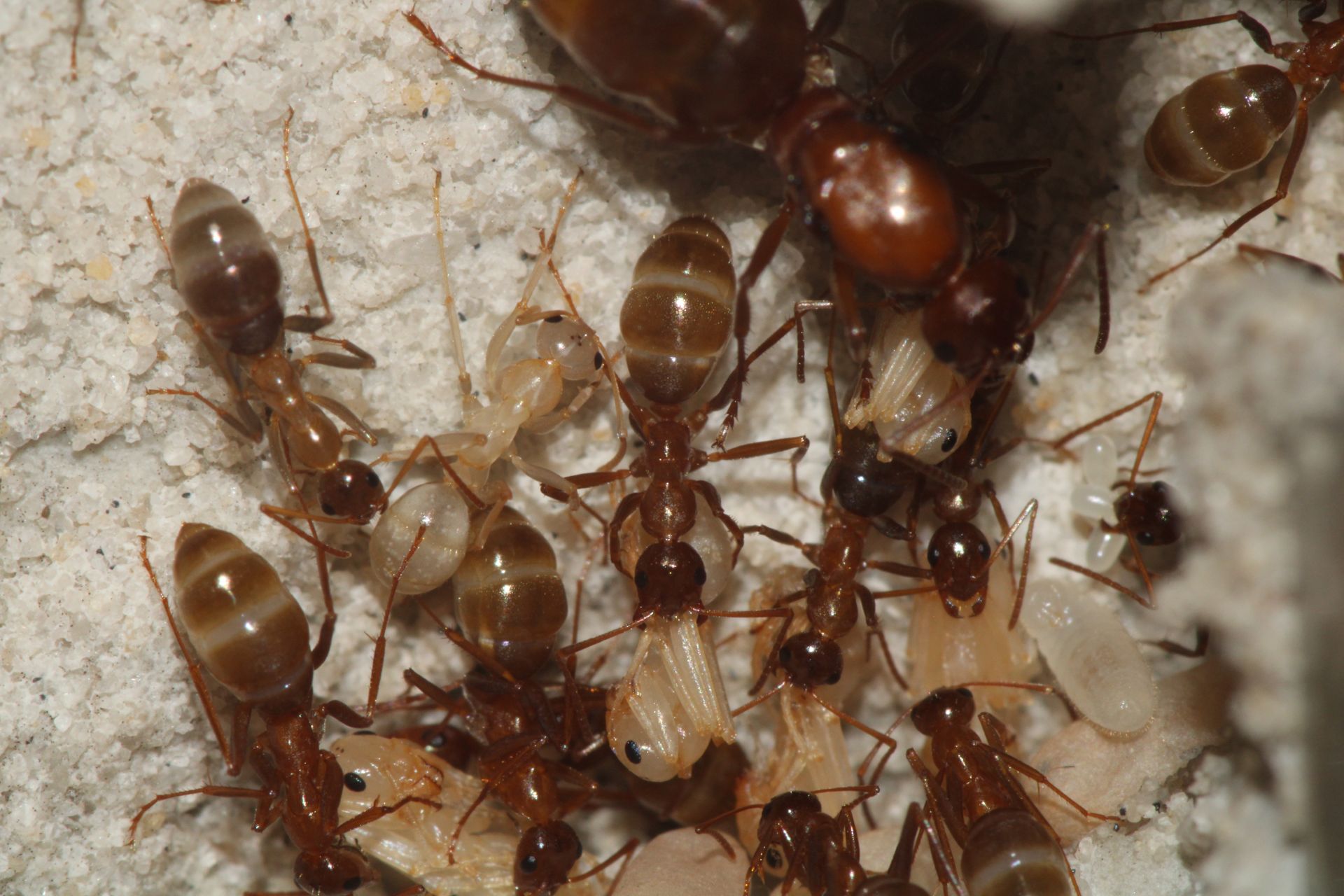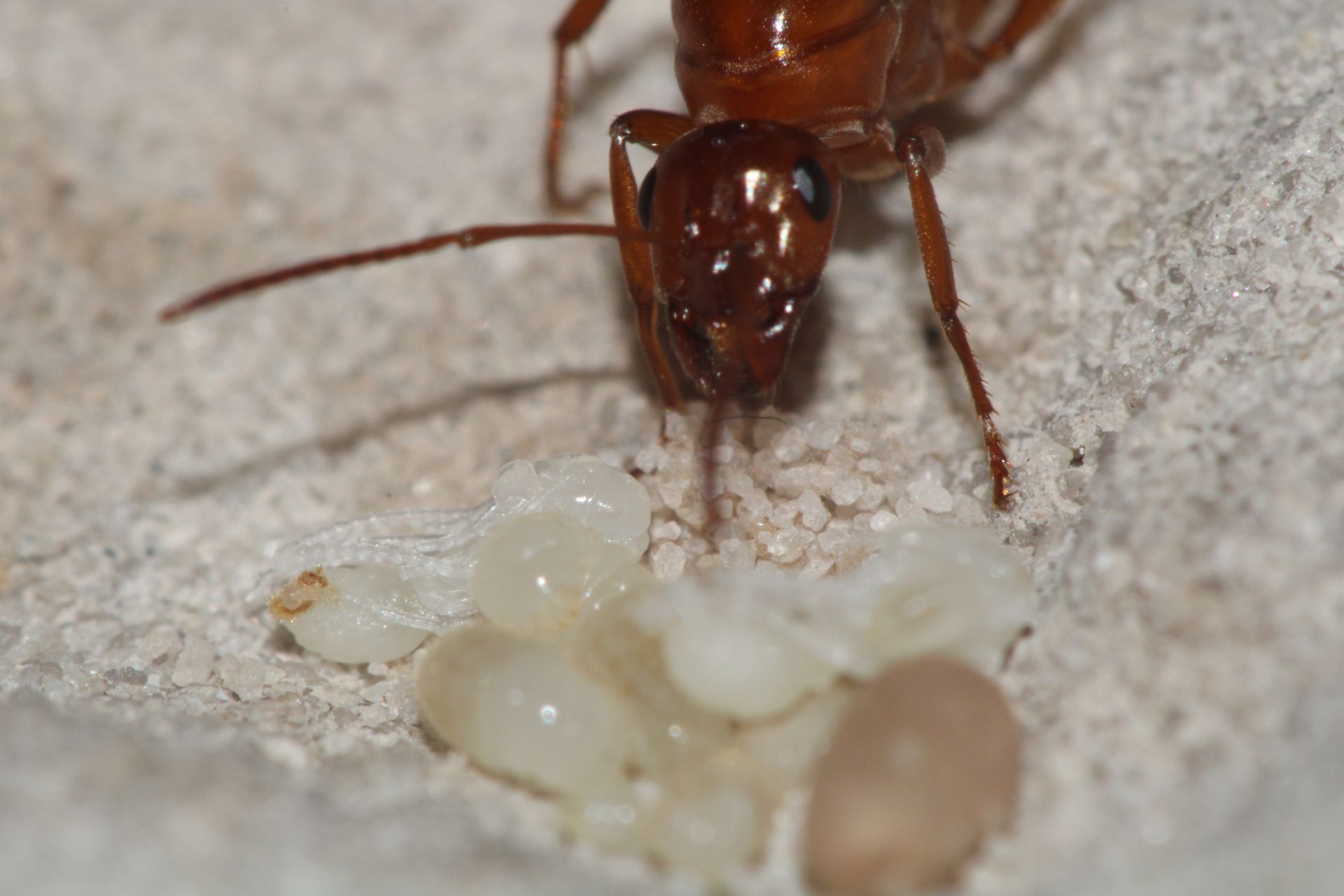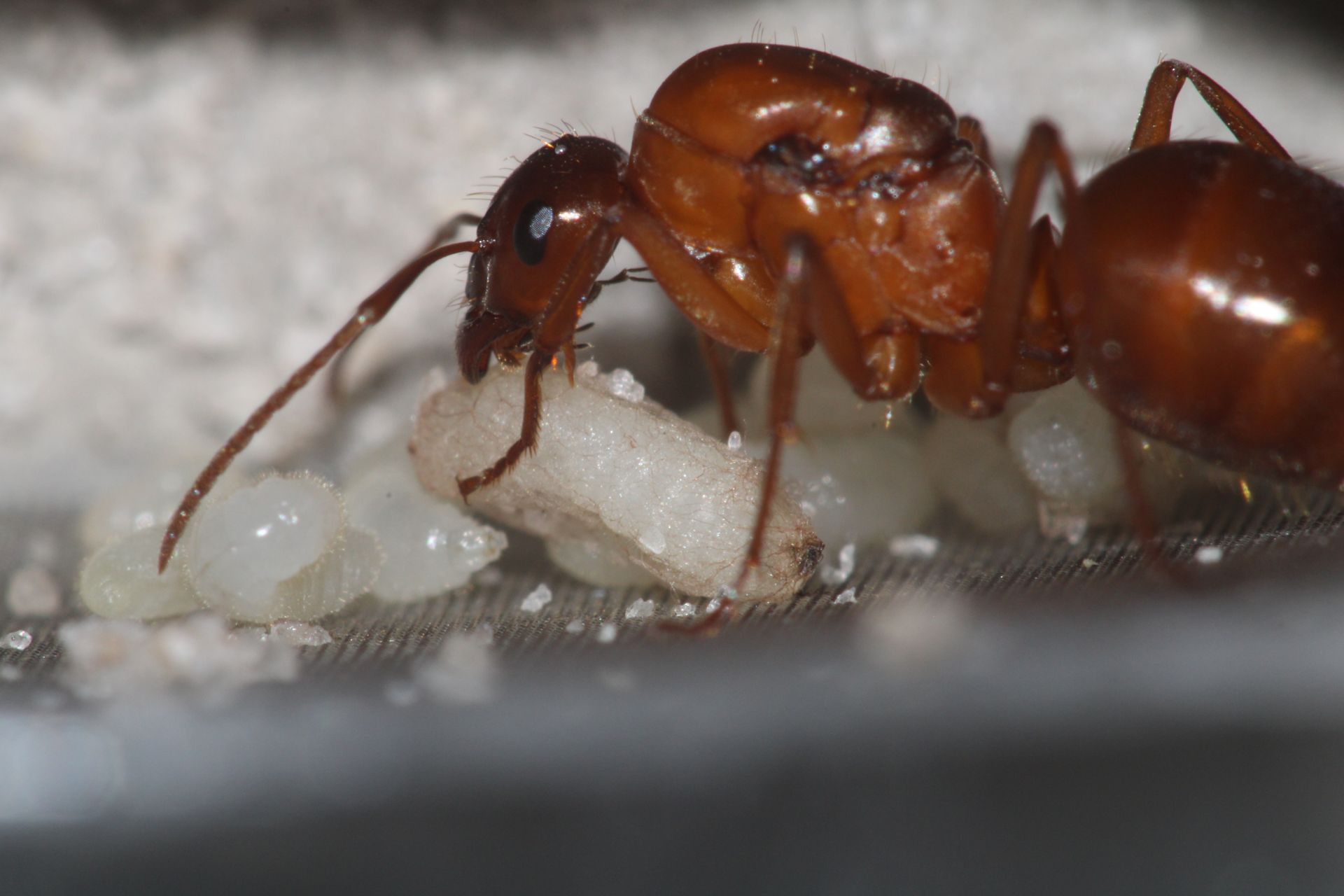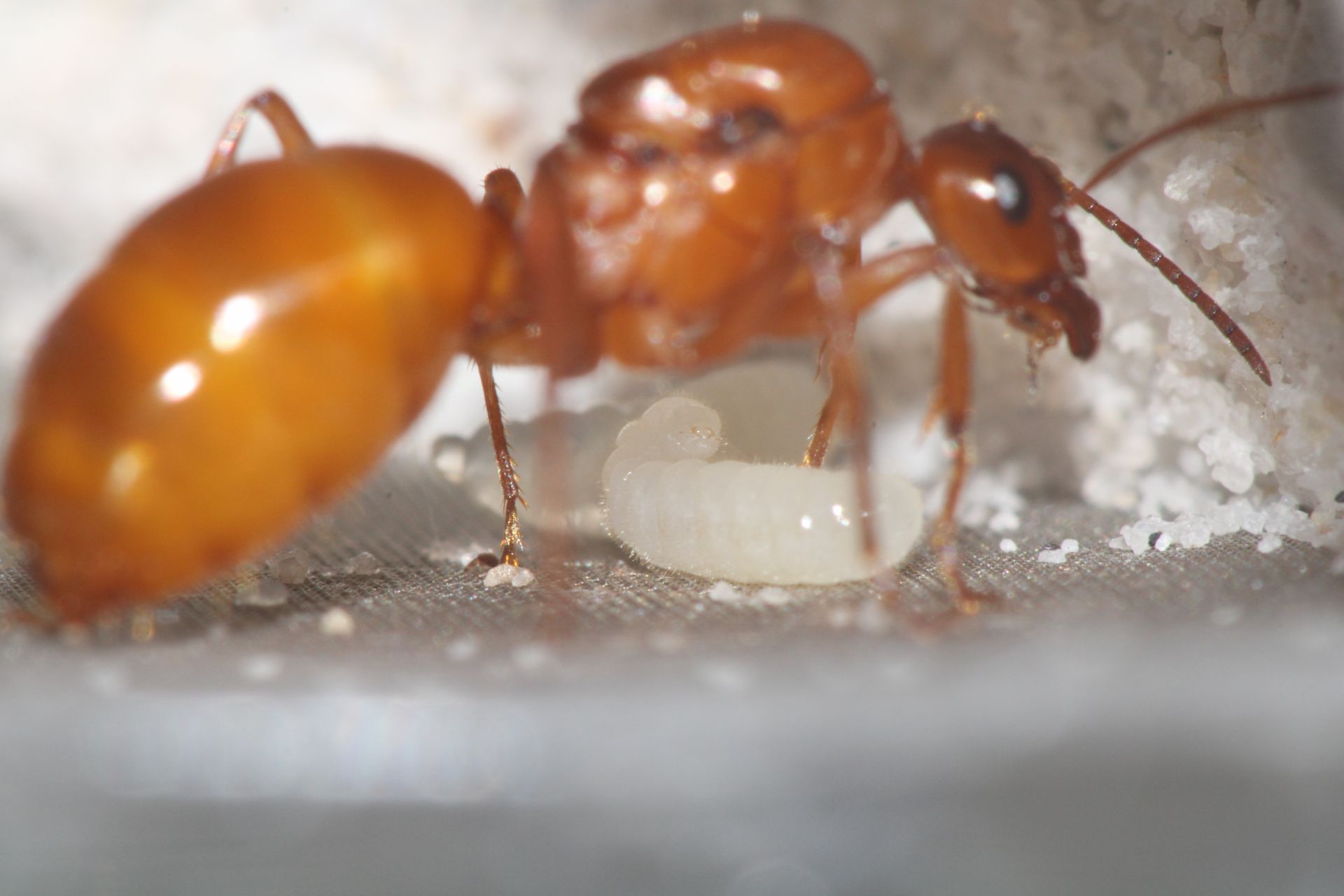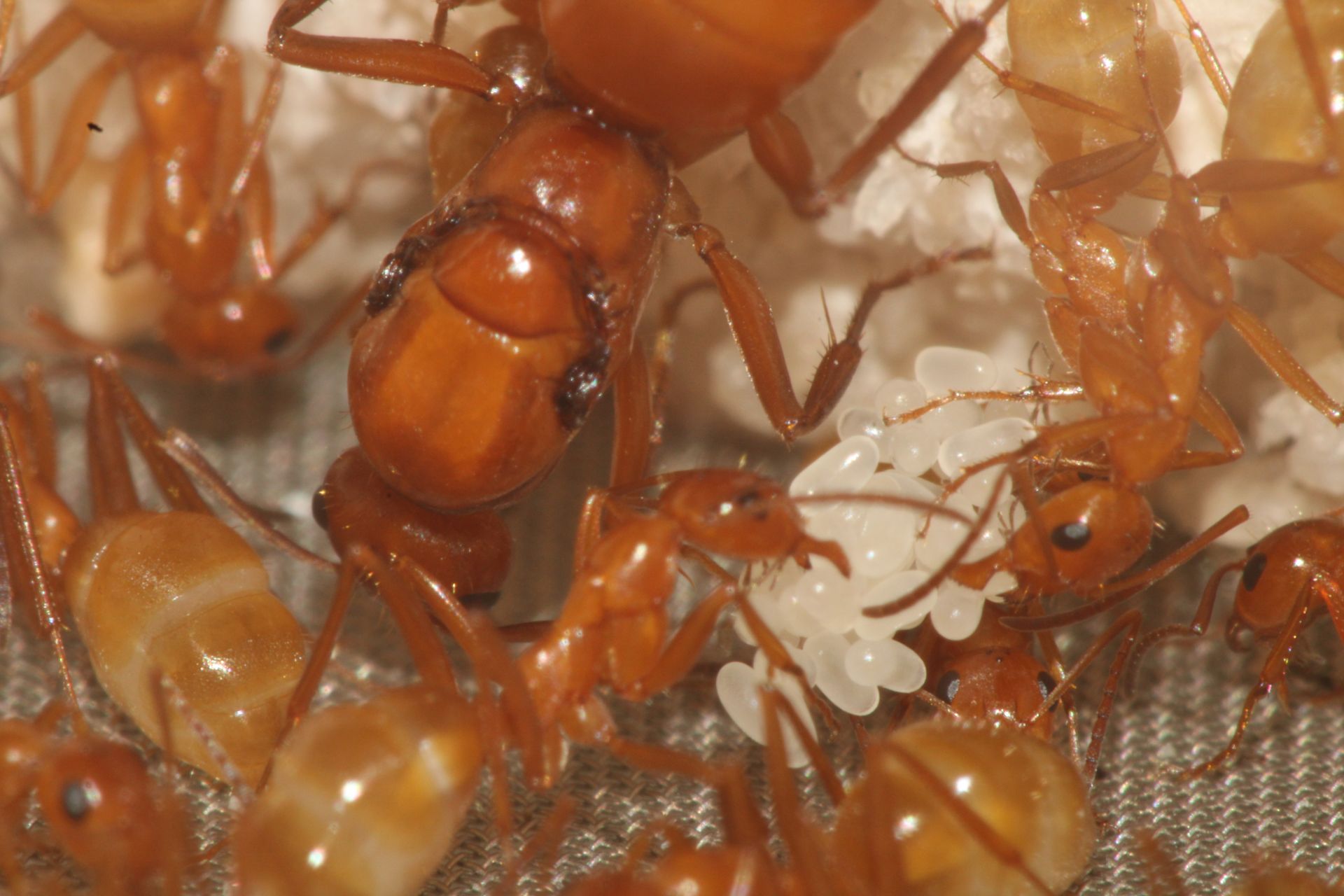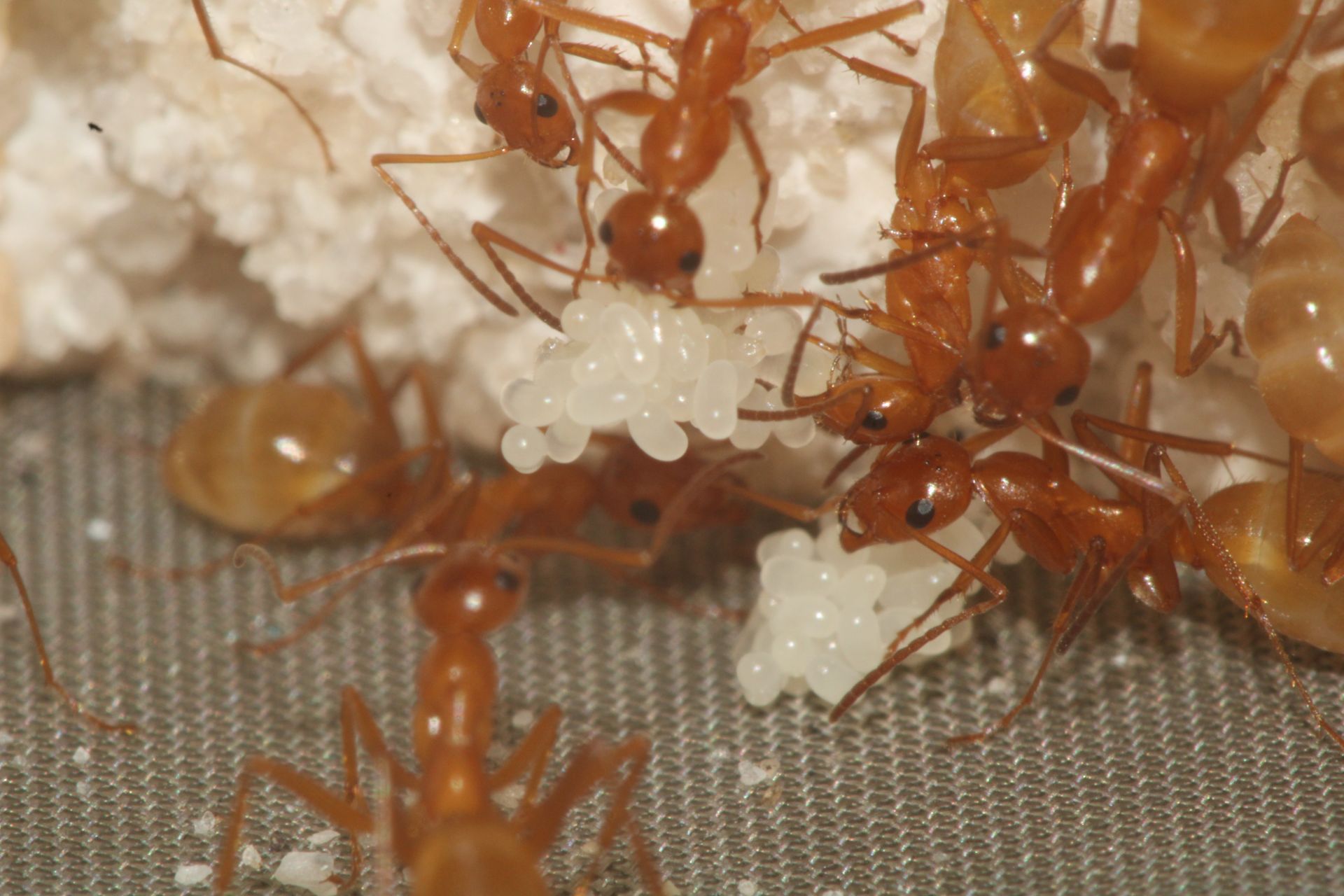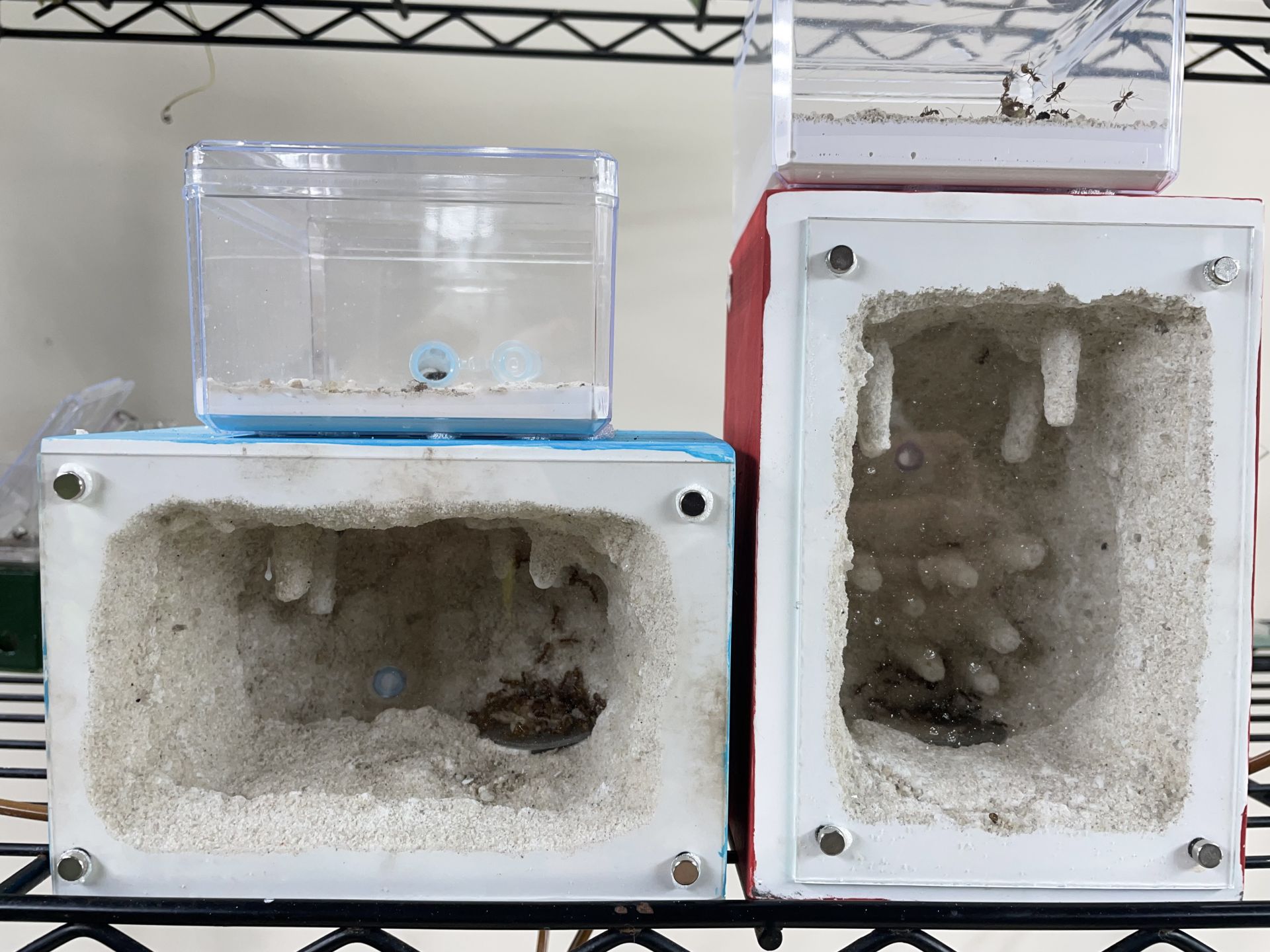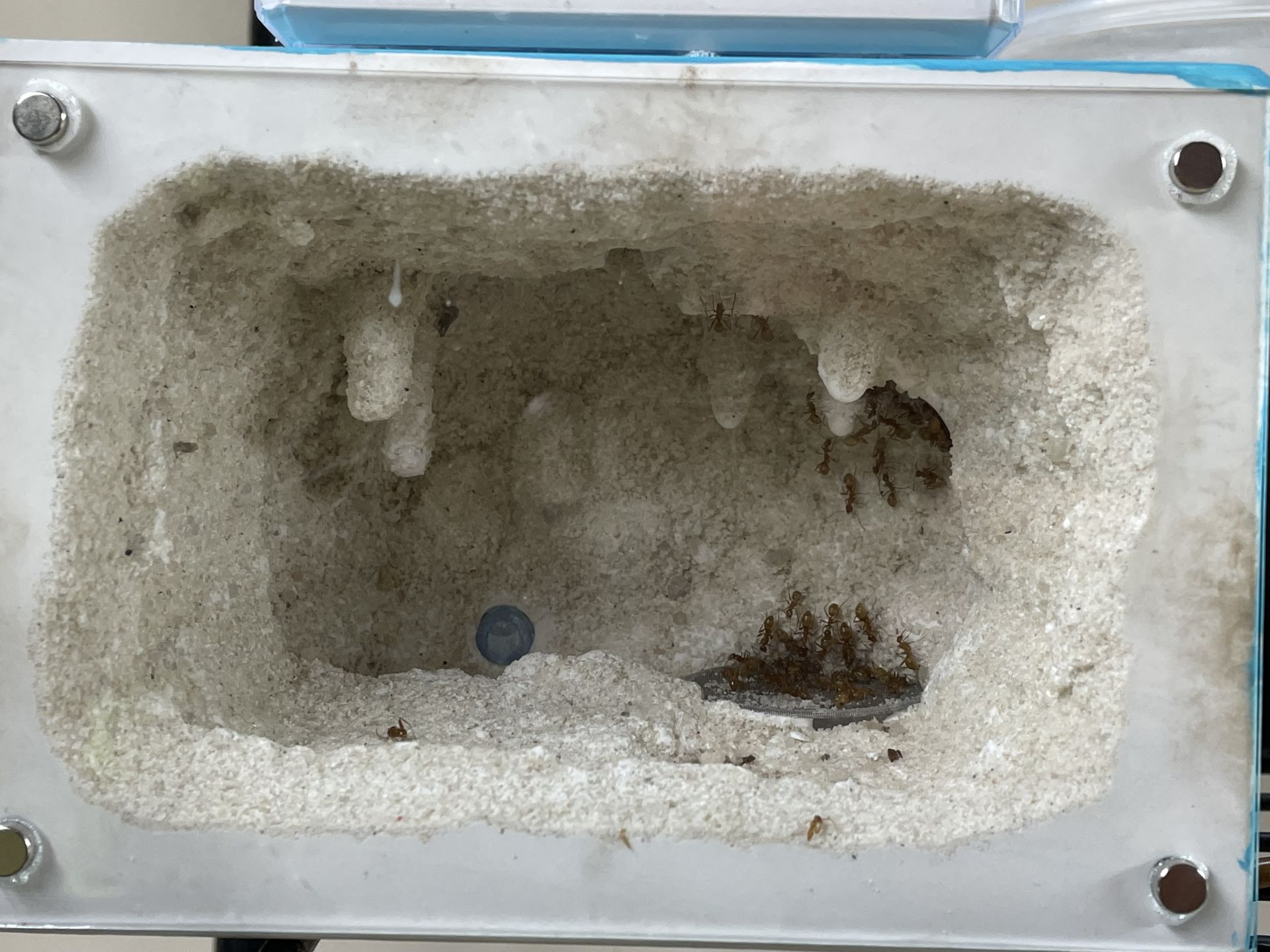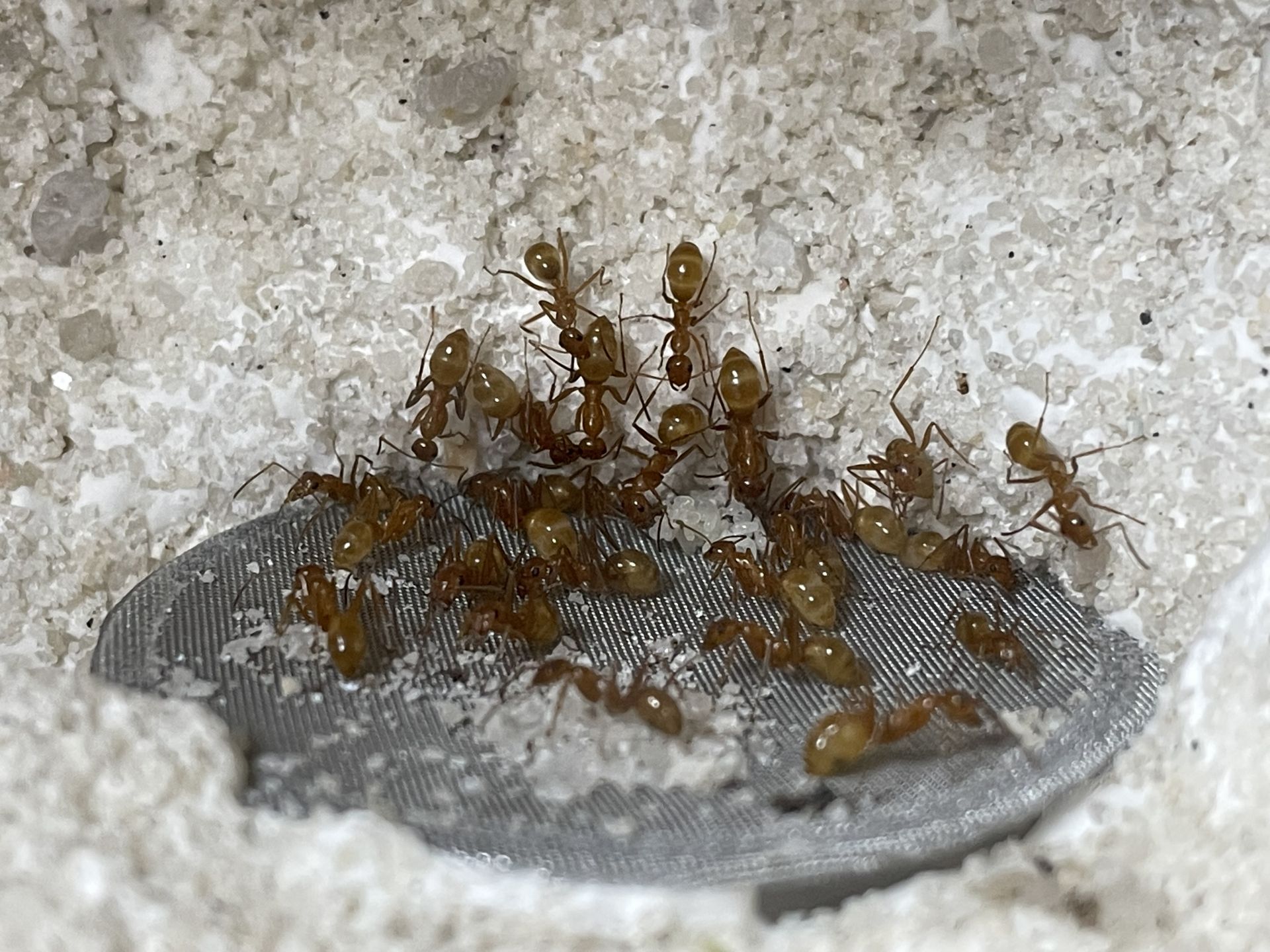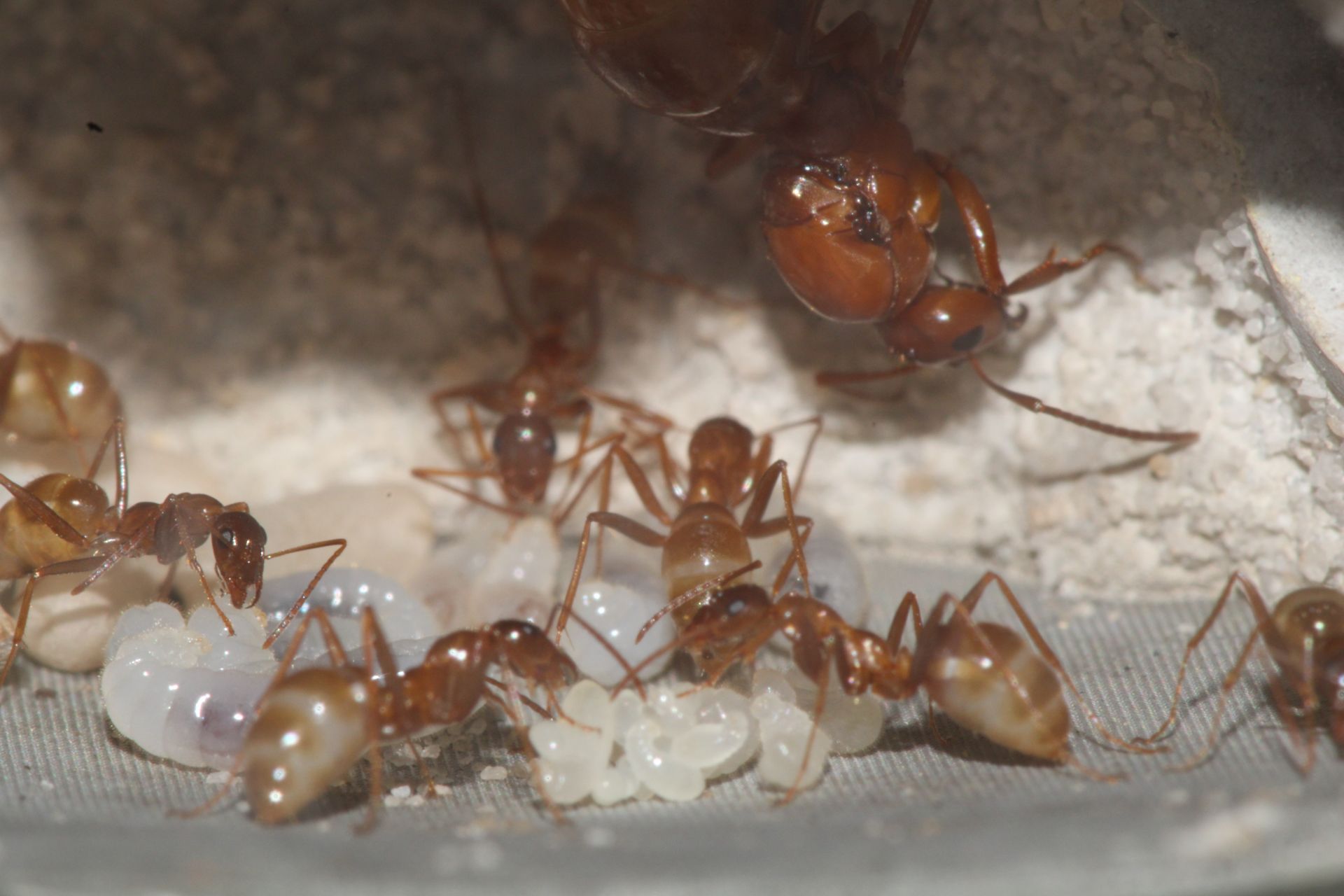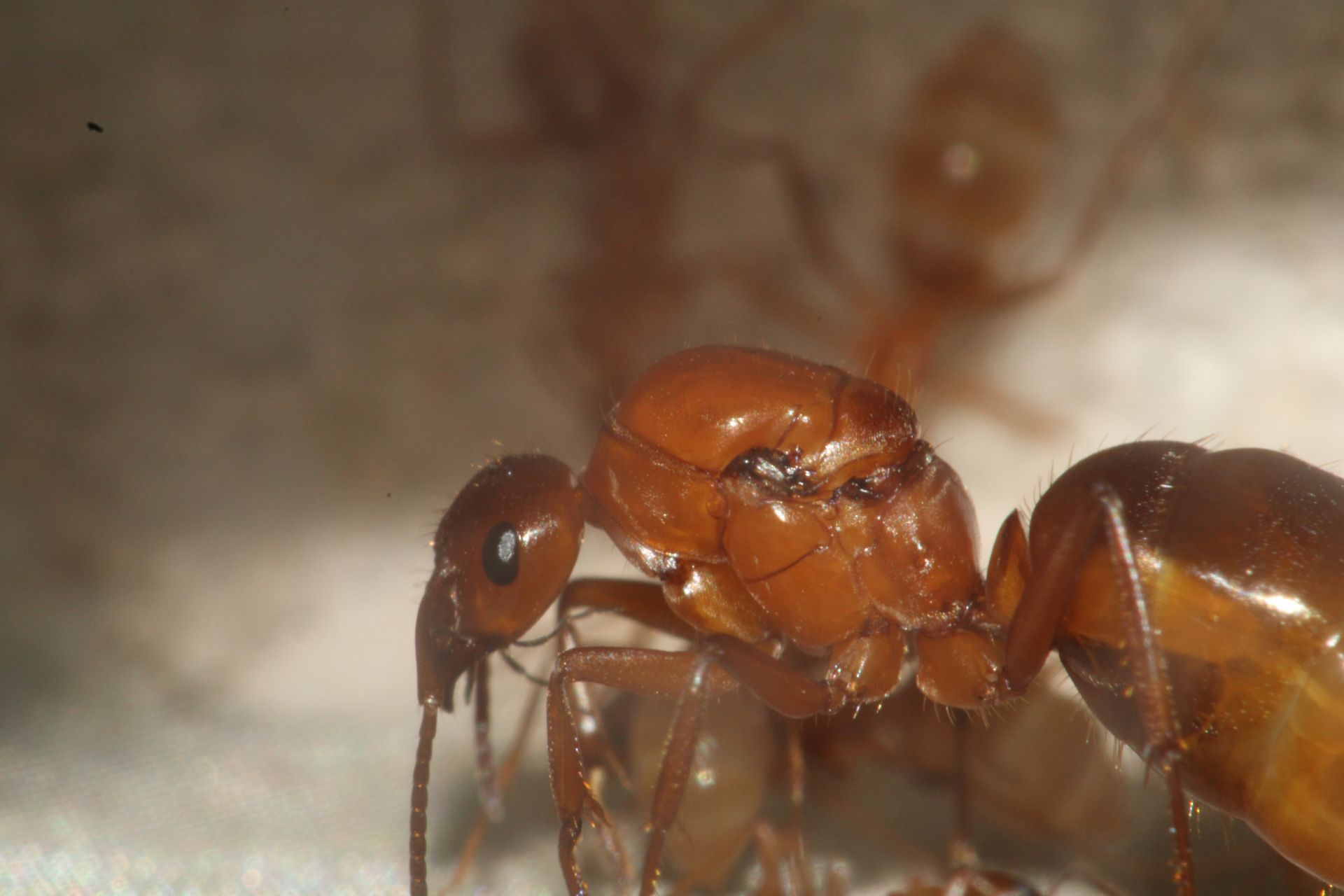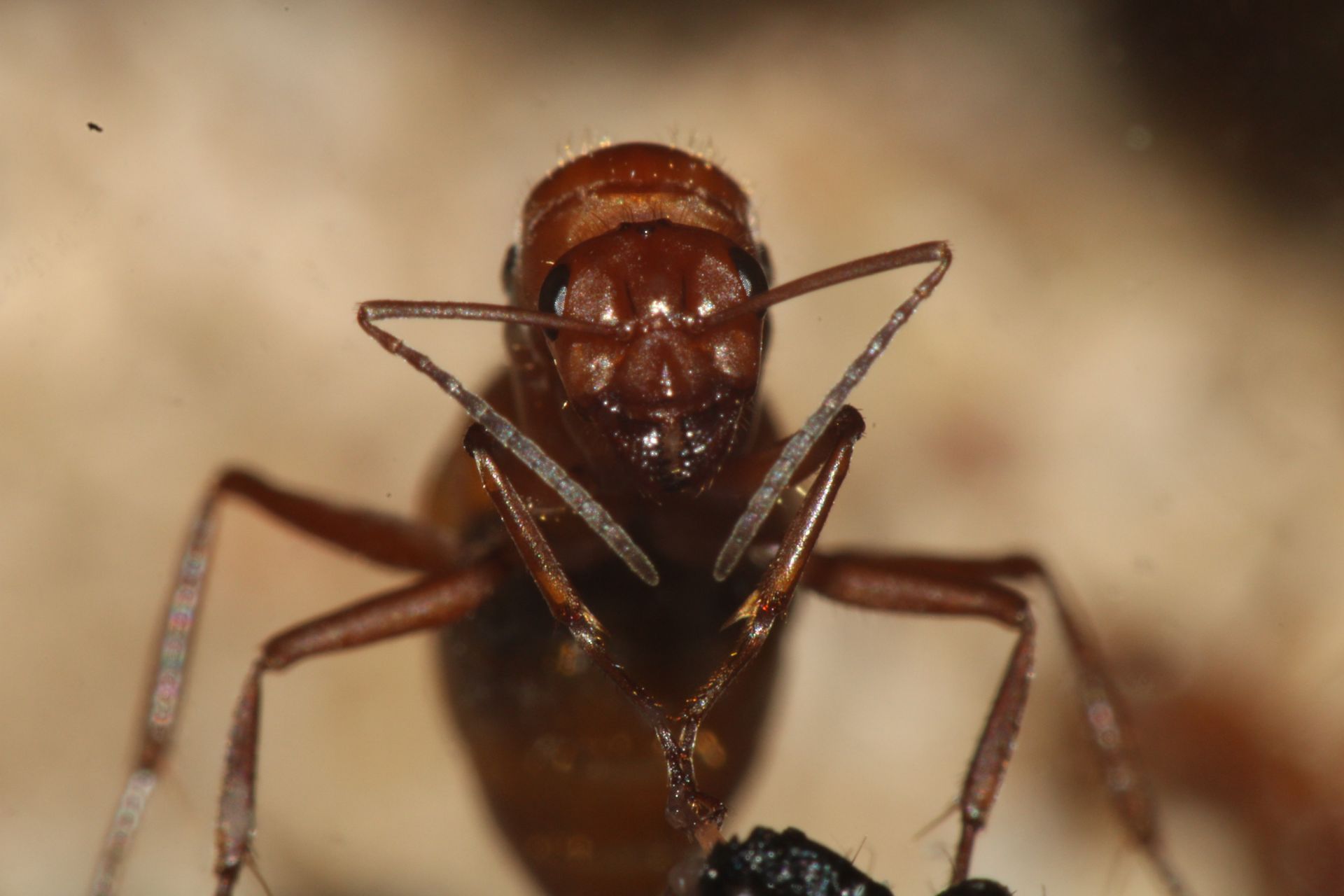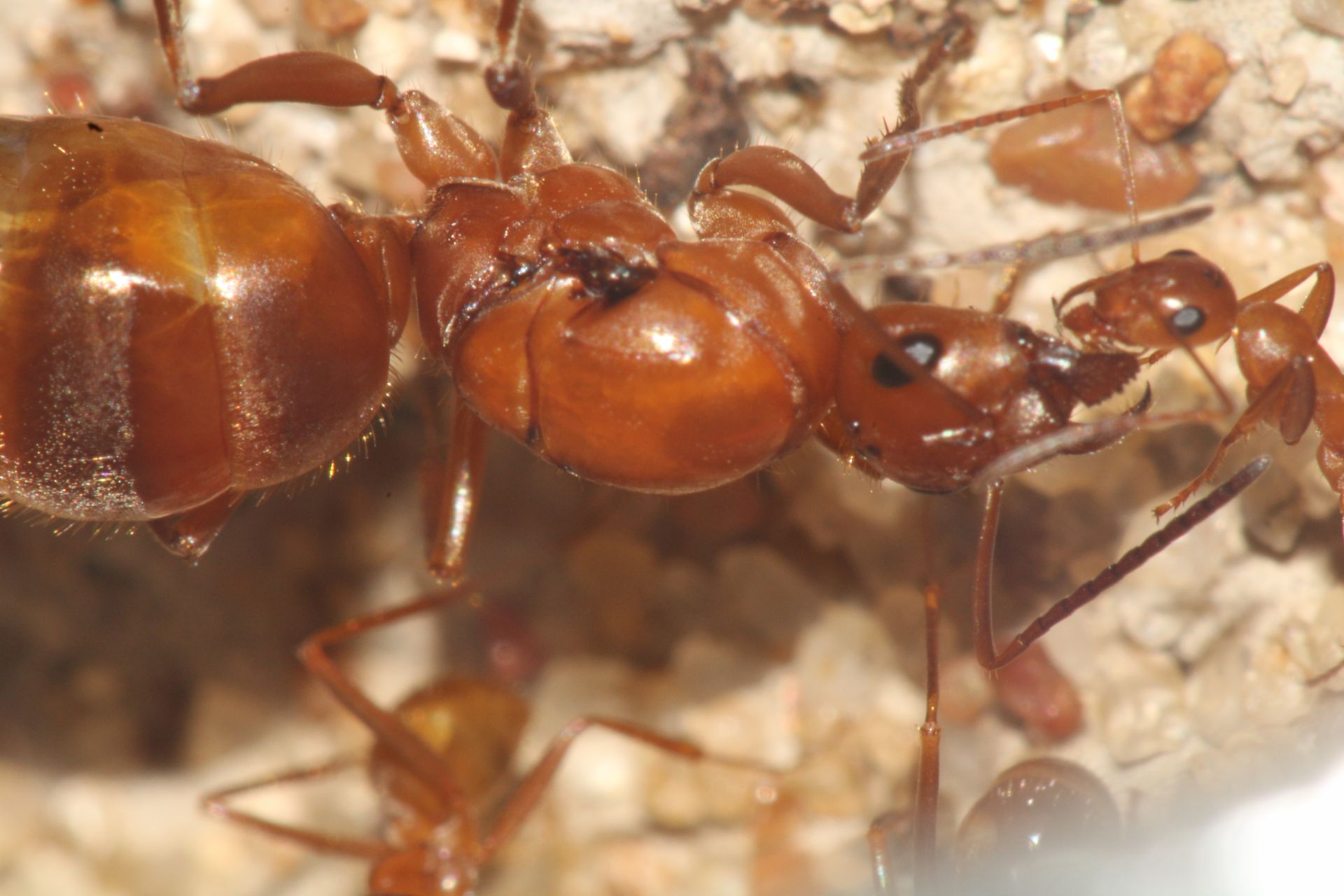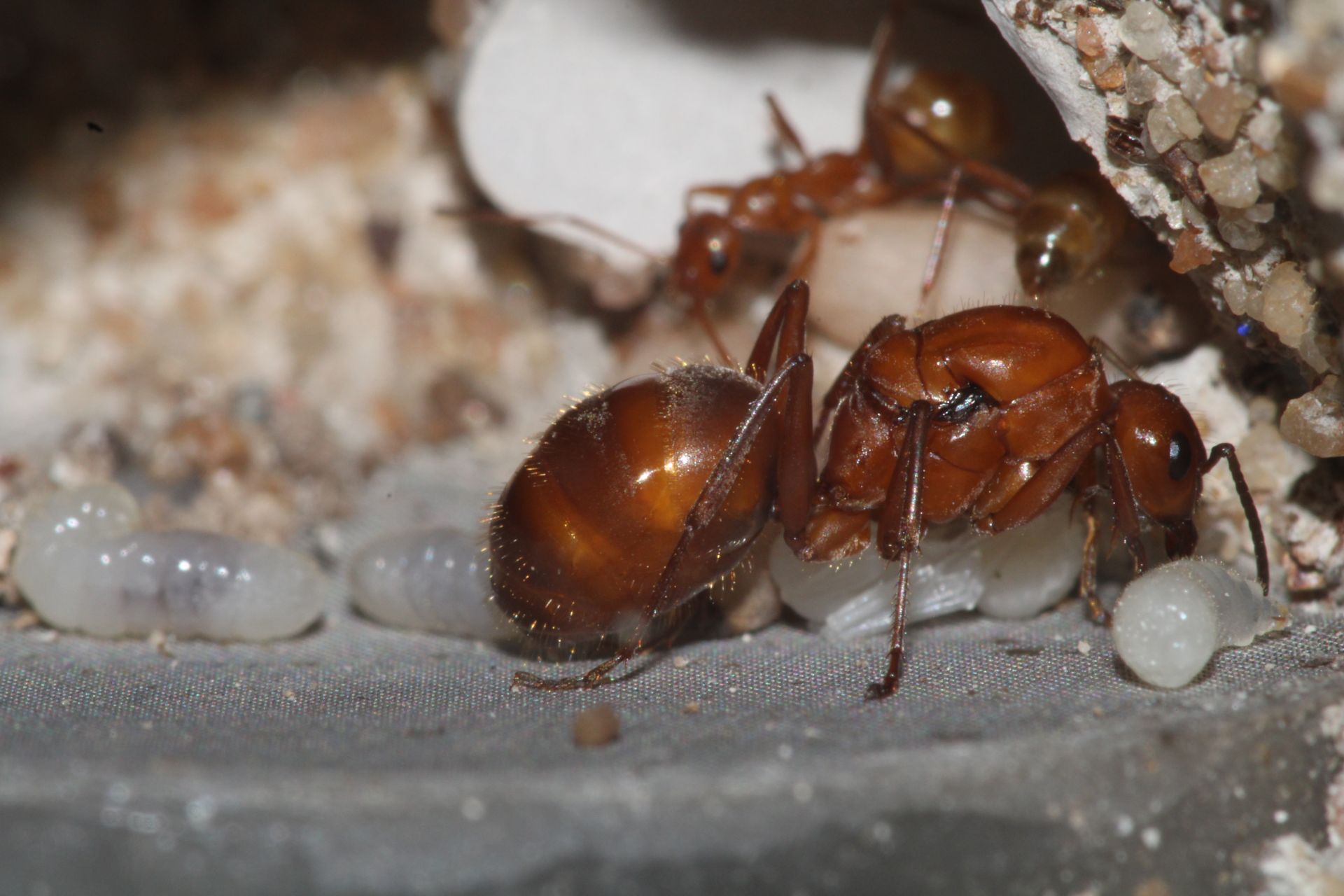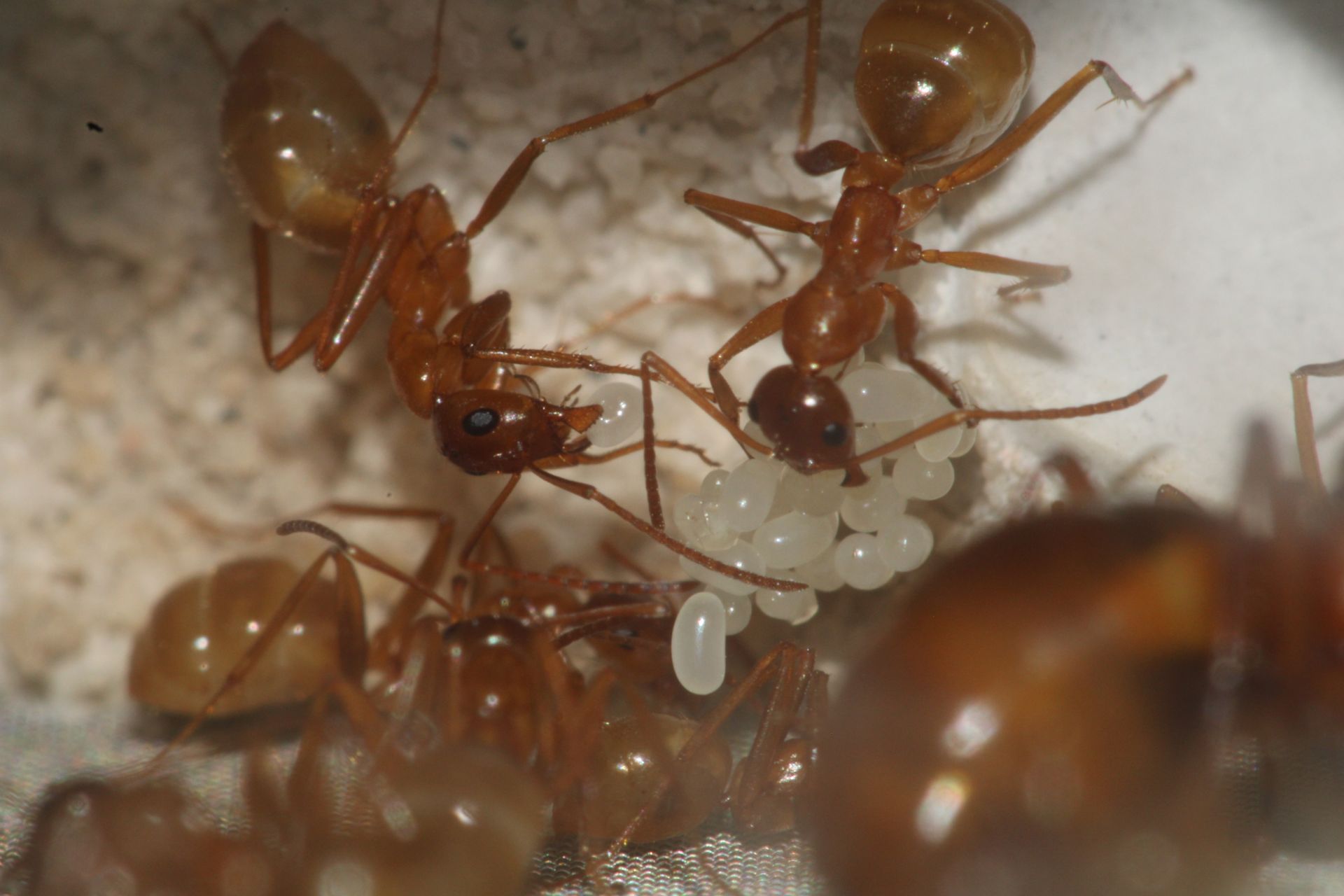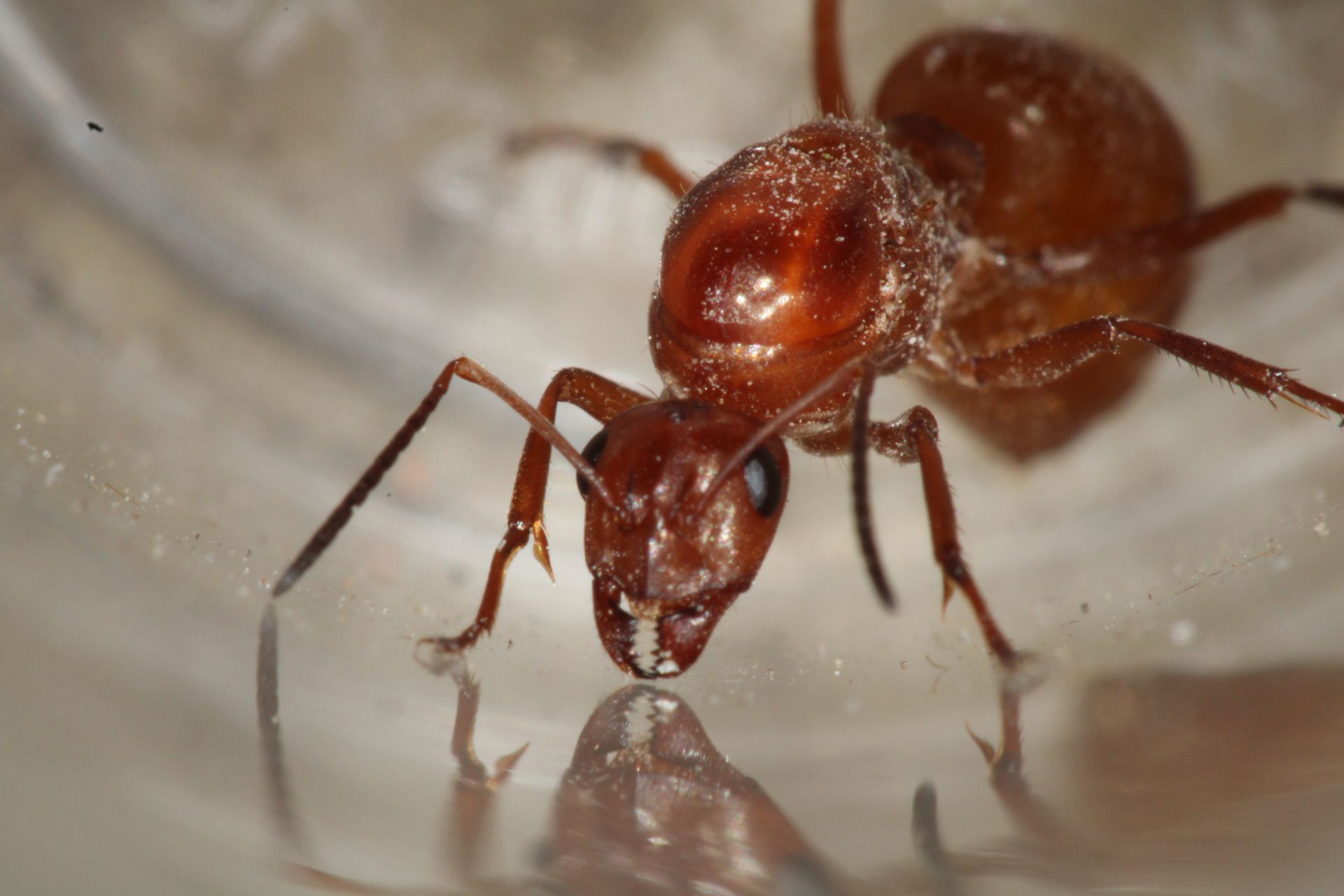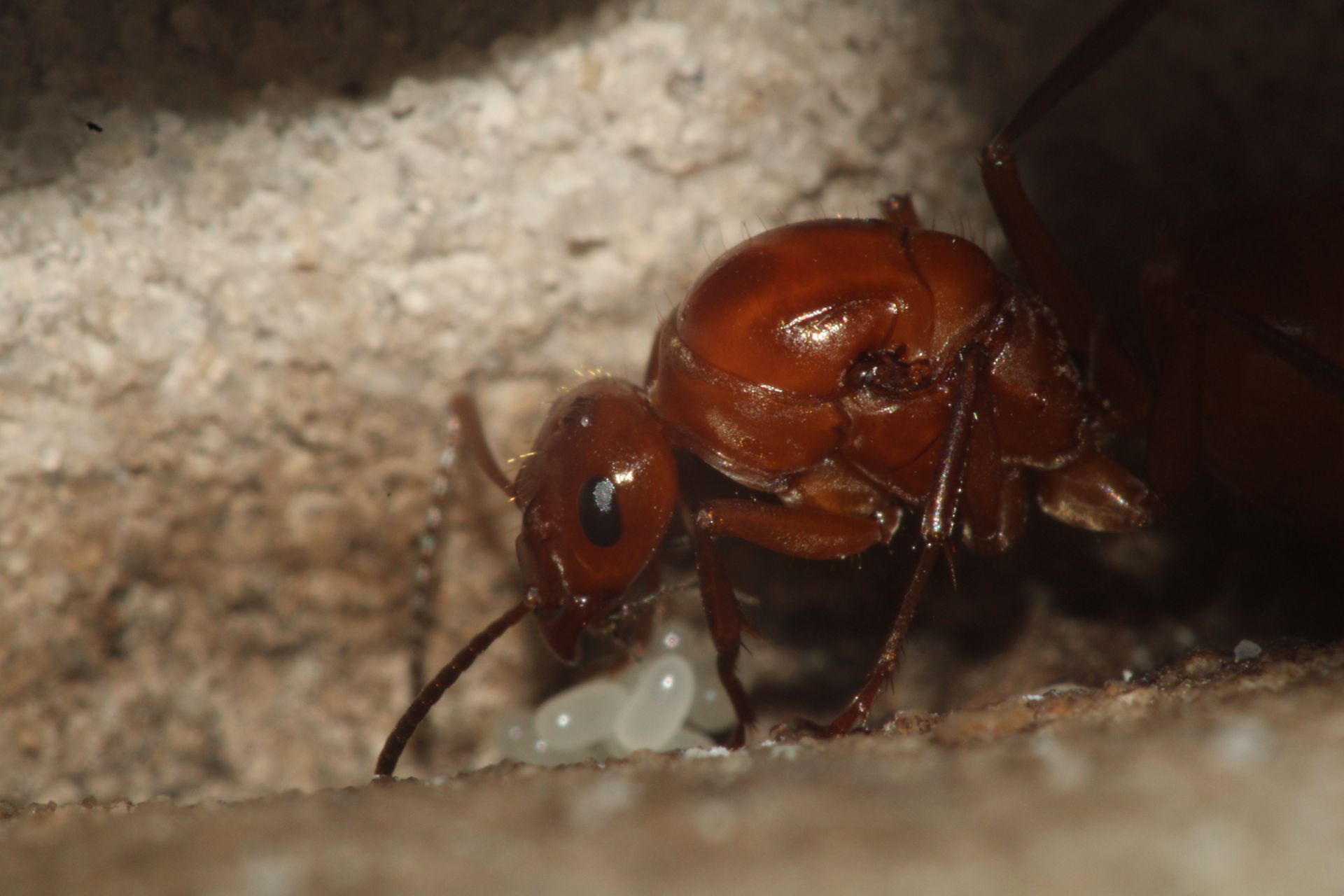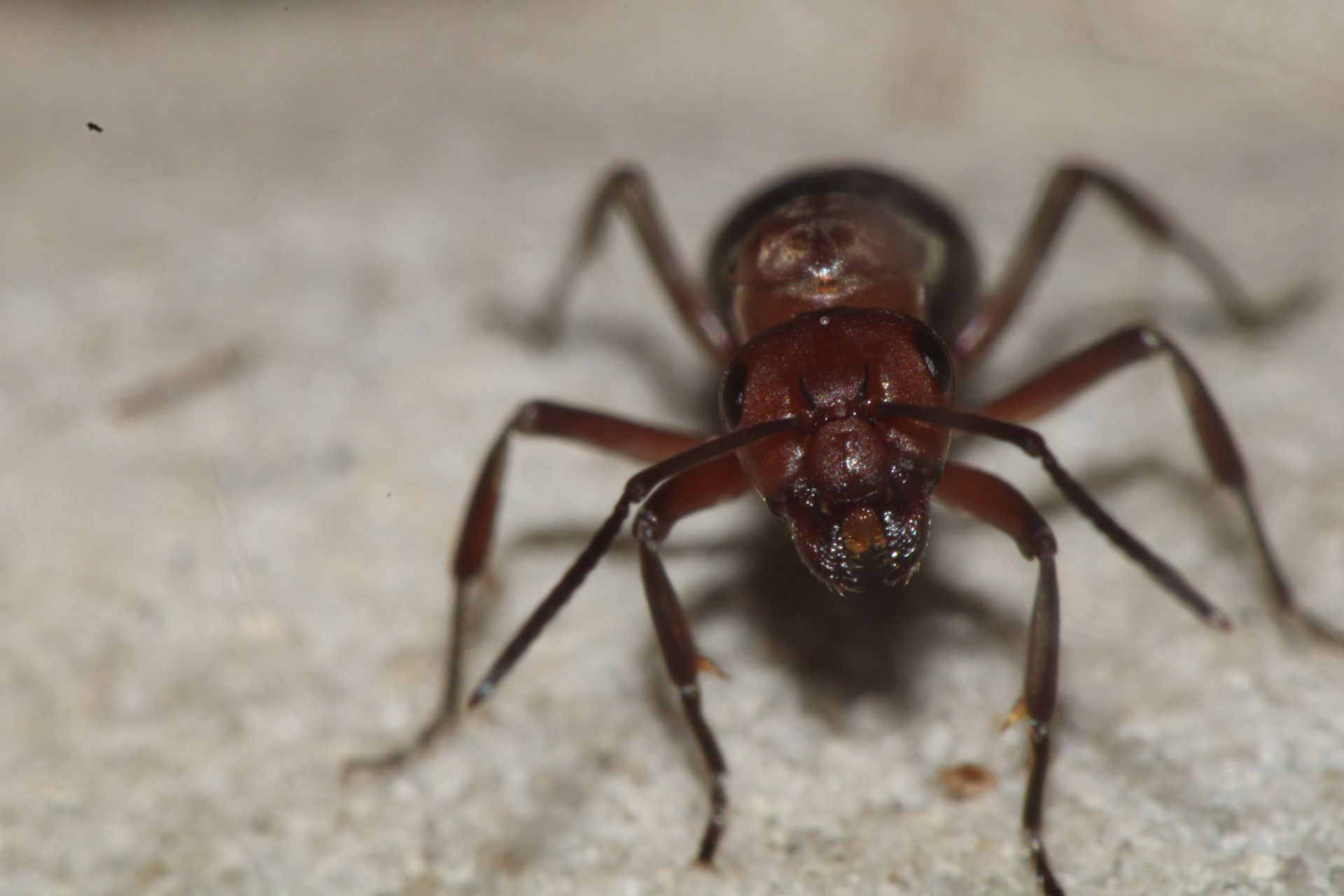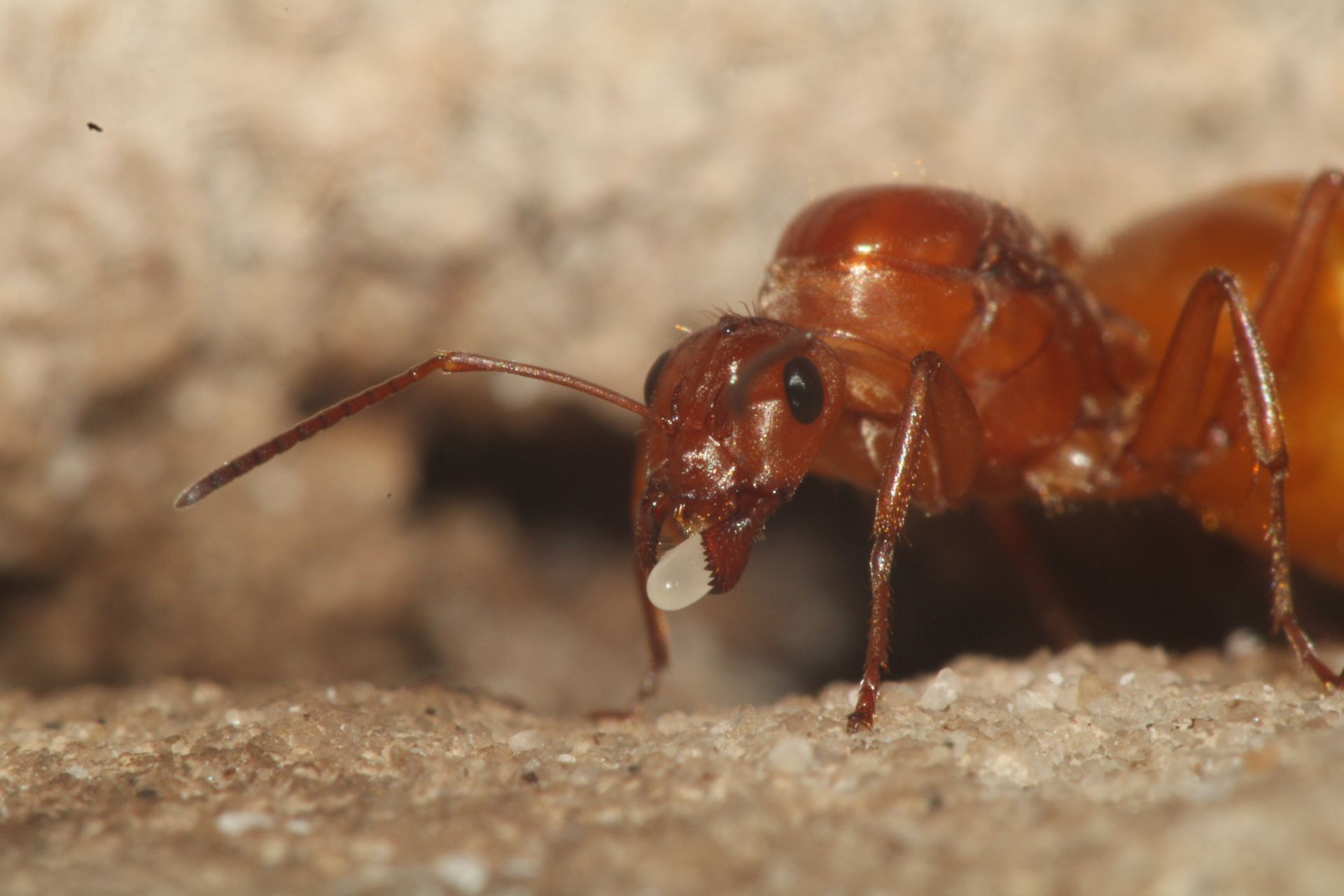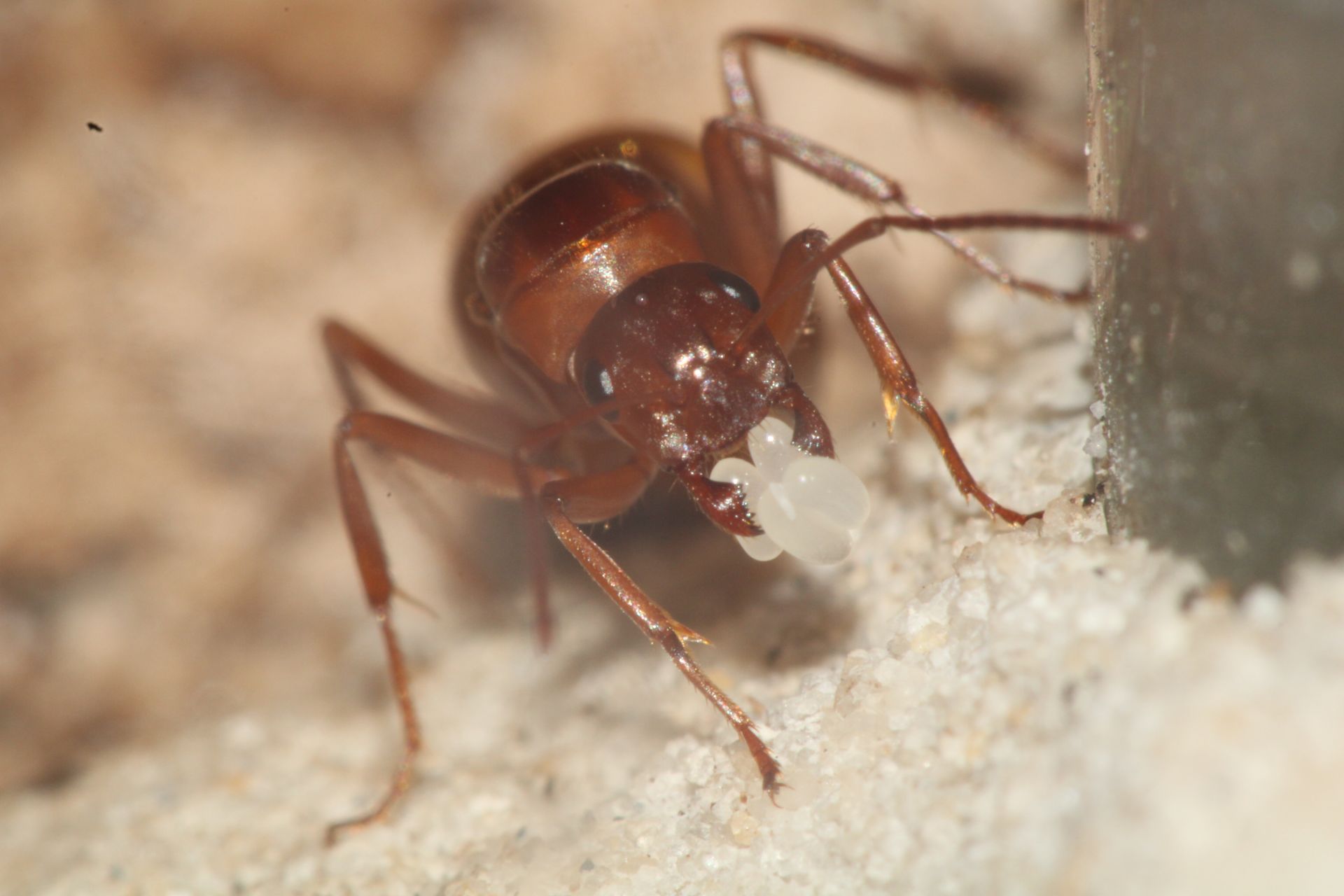July 1 Update 2022
Q1 – first new workers from 2022 started emerging May 9-10th, then continuously to date, a few a day, more or less. Colony is looking good and there is full-spectrum brood production. I did notice in the last week or two, a few older workers dying off; replacement is still >> die off though. Doing well.
Q2 – first new workers eclosed on May 15th (just a few, but more followed soon enough). They finally moved into their new home overnight 13th to the 14th – the move triggered maybe by the sense that the brood would emerge? I generally don’t believe too much in coincidences. Same as Q1, basically just continuously pumping out a steam of eggs. A few new workers seem to eclose every couple of days.
Q3 – first new workers started to eclose on May 29th, and steadily thereafter. Hungry, and continuing to produce brood; always at a slower rate than Q1 and Q2, though. Otherwise, good, and growing.
Q4 – First new workers emerged on May 24th, and steadily thereafter. This colony is easily the most aggressive drinker of sugar water, and fastest growing numerically, of the 2021 colonies (and maybe all of them if the pattern holds). They are darker workers that closely resemble Q3’s, though the queen herself is lighter in color by a bit, than Q3. Same tendency toward tearing apart insect prey, but these ones take as much of the sugar as anyone else, too. There are over 35 workers, and brood, too.
Q7 – Far behind the 2021 pack, but taking food constantly and making plenty of eggs. Maybe, finally, a few first instar larvae, but these seem to grow for a bit and then get eaten. It seems like for most of the season, the queen continuously was engorged and produced eggs, but none or only a few hatched, and they were consumed. She’s not sterile, obviously, as she made workers last year. They eat, they poop, they make eggs – and that’s it. I have no idea. Not one single new worker has come this year, but there’s always an egg pile. This colony is just different somehow.
Q8 – First new workers (2) emerged on May 12th; these immediately tanked up and had huge, pale bellies. The older two workers are now less engorged and seem to function as the main foragers. As of today, we have ~ 20 workers and a full spectrum of brood objects. Some of the newer cocoons are starkly bigger than the cocoons of any other colony (not reproductive, big!) and I can’t wait to see the ‘majors’ these yield.
Now for this season. On June 4th, right on cue, I found a dead male alate of the pallidefulva group on the sidewalk. I took as much time as I could to patrol for queens, but found none, despite it just feeling like a Formica day – still, warm, slightly humid, with clear skies. (Note for next paragraph – no rain here for days and days at that point). On June 7th, I found a dead incerta dealate female on the sidewalk at work – she had just died because her antennae still gently twitched and she was soft, despite being on hot asphalt in 90F sunlight. Rats!
But, redemption. On June 8th, I found a perfect dealate incerta (Q9) running across hot open ground at around 12:30 PM. Q9 has already reared up her first cocoon, with 5-6 more big larvae, by this post. She is not so pale as Q1, but very similar markings on the thorax.
June 9-18 featured mostly hot, dry, and often windy weather. I saw males being kicked out of the parking lot incerta nest at work many mornings on my way into the office, but didn’t recover any additional queens despite looking when I could.
On Father’s Day, I was rewarded with seeing for the first time a small flight of Formica pergandei, my local dulotic Formica, at a park near my home. I captured two males, an alate female, and a single dealate female. I’ll circle back on her.
The 21st of June 2022 may go down as my best ant day ever. Dawn was overcast, even foggy at ground level, and calm. The fog rapidly cleared out and the skies completely cleared around 11; at this point, the incerta colony at the edge of our parking lot went nuts. Alates (males, maybe 30-40, only from one colony; females only (I counted six) from another about 150 feet away) launched within minutes of the sun hitting the nest entrances, and around 12:45 I found a dealate female (Q10) not far off, running over the hot asphalt at parking lot’s edge.
I decided to take an afternoon conference call as a walking meeting, because that’s what all the cool kids do these days. Rewarded for that, I was, hmmm.
I visited a spot on campus where I have seen raiders previously; fortunately there was an active raid and I was able to snag about 30 pupae and another 10-15 cocoons (so far they’re all F. subsericea) from the raiders as they went across the trail, in the hopes of jump starting Faora (the pergandei dealate). More on that part later. Surprise! I recovered three additional dealate female F. pergandei, all within about 100 feet of the raiding column. In fact, one was trying unsuccessfully to steal the pupa being carried by a raider. That’s how I spotted her! Subsequently I’ve seen several other feral dealates trying to do this.
Then, I found another, darker incerta, as I took the trail back to the office. Q11!
There were also numerous subsericea males and dealate females running around all over the woods. It was definitely a Formica swarm day.
After a few days, Faora started stacking up, grooming, and generally spending a lot of time on the captured pupae. As of today, she has two subsericea taking care of her, grooming, getting sugar water, etc. She continues to take care of her little pupae pile, and is not so lean as she was at capture. So far, so good.
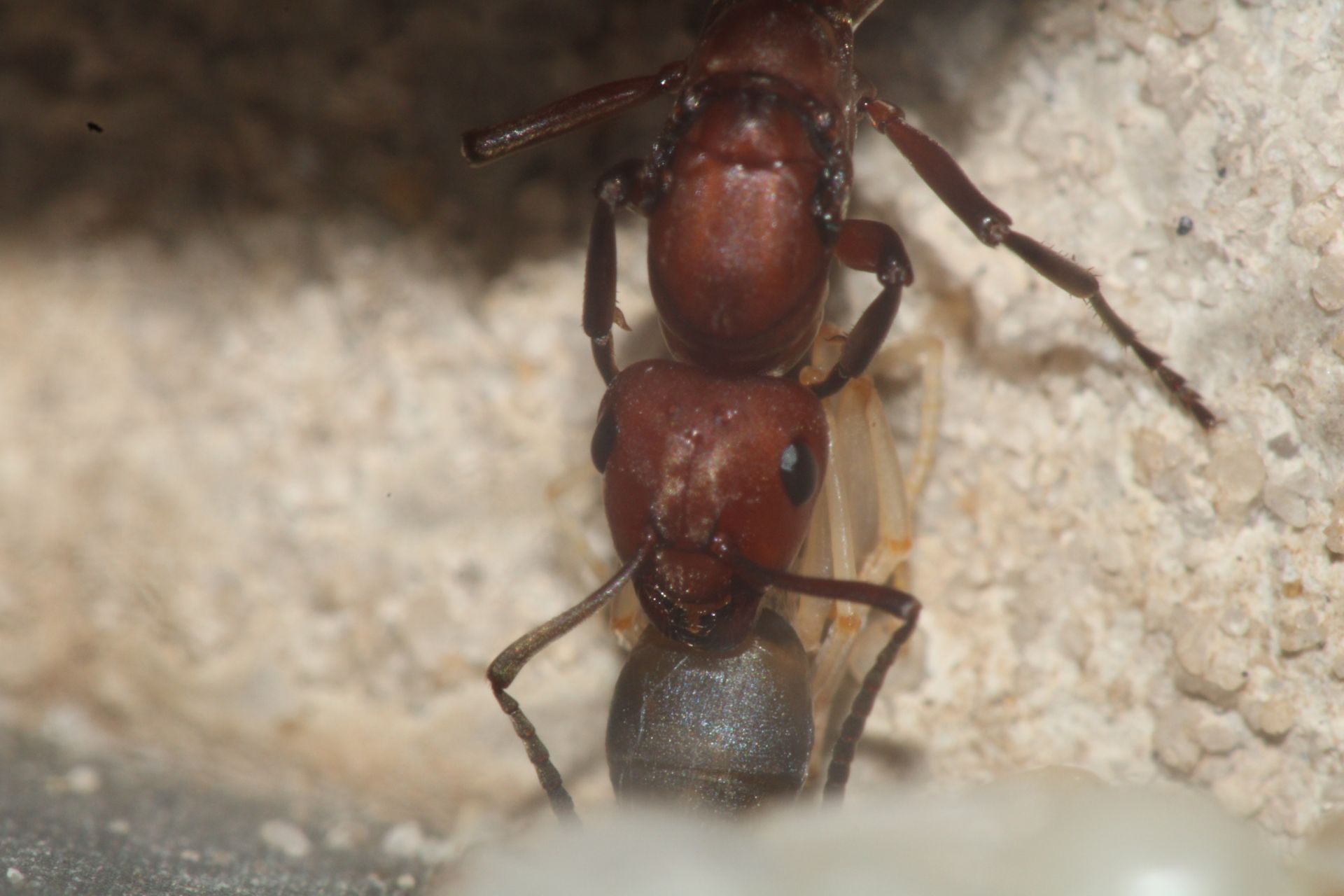
Since then, subsericea has flown almost dozen times to varying degrees (I see one to many dealates), and I’ve found dead dealate incerta around the parking lot several times – almost always headless. Today, at lunch, I recovered a wounded (front left leg totally not functional) incerta queen staggering around, as well as an alate female, also kept. I don’t have high hopes for either, so I won’t name her yet. I also found two more dealate pergandei today. I have, more or less, seen these wandering around the trails and sidewalks almost every day since the Father’s Day flight. It must take them a long time to find their victims. The funny thing is, I don’t ever remember seeing the queens before. Maybe a good year for them?
Philosophical aside - I have been wondering, how do the ants themselves perceive the time to fly? I used to think it was the rains, like for many other species, but this year has been staggeringly dry. Does it have something to do with rate of daily photoperiod change? Specific weather conditions? Other? In central NC, the animals fly from early June until mid-July with now three years of rather intensive looking for me. This period in our area also features a daily rate of day length change of less than a minute (meaning, from, about +1 min on Jun 1 to -1 minute by July 15). Is this the ‘limit’ at which ants can sense the change in photoperiod? Does that tell them when to start, and then stop, flying each year? (Like this: message to ant brain – if you can’t tell if days are getting longer or shorter, barf out the alates!) I wonder if this period matches other areas or is just a coincidence. Might be, I spend too much time thinking about ants.
At least for this group, it seems like rain is a much looser (or zero) link to their flight activity than for many others – I have found queens up to 10 days since rain (this to me, seems like a lousy synchronization cue at that point). In an area like central NC, where rain is incredibly local and fickle at this time of year (it’s basically all convective, not frontal, and you can easily have a flood warning across town from D2 drought – look at UNL’s drought monitor if you think I am exaggerating), you wouldn’t get but very highly localized flights based on the storms. This would reduce the area-wide flights for mixing of genes unless they use some other cue and almost guarantee inbreeding. So, they’ve outsourced the cue to something else. Thoughts?
Last thing – though last year I didn’t actually catch a live pallidefulva group queen until the 4th of July, I can’t help escape the feeling that this year is winding down already. Even my reliable parking lot nests have been quiet now, and when I do see queens (like today) it’s deeper into the woods or not at all. It’s also getting worse with the drought, which may force their hand to cannibalize any remaining repros in the nest. OTOH, I haven’t found a non-marked (e.g. pallidefulva vs. incerta/dolosa) queen yet, and Q8 – the likely dolosa – was found last year in mid-July. We’ll see!
![]()
